THE MAGIC OF DEPARTMENT STORES
Shop windows and exterior fittings
at la Rinascente
From the shop windows under the arcades to the paper window dressings, prospective purchasers are offered a journey to discover and appreciate industrial civilization, consistently with a common aesthetic vocation that had been already discussed by Edoardo Persico in his column on città che si rinnova (the renewing city) published in “Casabella”. […] As mentioned by Bruno Munari in an interview held on 21 May 1981, la Rinascente, along with Olivetti and Pirelli, was “a cultural centre besides a mercantile centre”, a place for experimentation where art, design and commerce were profitably mixed by using unusual languages in places that were out of the ordinary and open to the extensive public. Hence, although the architecture of the new location, which was necessary after the damage suffered during the war, was designed by Ferdinando Reggiori as the product of an educated, yet posthumous Modernism, la Rinascente’s management was sensitive to the resources of modern design […, entrusting Architect Carlo Pagani to handle both the internal layout and the long row of shop windows that lined the arcades: it was an open front that “offered an interior view of the entire department store to attract the public” (as Giorgio Brustio wrote in a report of 26 April 1950 on the reconstruction of the new Department Store)
Fulvio Irace (lR 100. Rinascente. Stories of Innovation)
As reported by Fulvio Irace, Architect Carlo Pagani designed the interior architecture and furnishings, entrances and windows of la Rinascente’s new Milanese branch in Piazza del Duomo, which was opened on 4 December 1950. Regarding the window structure, when studying the front under the arcades in Corso Vittorio Emanuele II, the issue was to reduce the height of the windows, which had to rise to a height of 9 m above road level, without falling into the trap of false architectural decorations. Hence, the building’s front was designed to feature a second set of windows on the top floor that could be sub-divided for special events and initiatives, closed by mobile and removable panels with a highly visible continuous row of aluminium-lined metal shutters as a decorative element. Lighting, instead, exploited “gutters” containing continuous fluorescent tubes. Hence, while the merchandise is displayed in the bottom row of windows, the top ones are used during special moments of the year, such as the Christmas season, to enhance the attractive power of sales with suggestive scenic creations.
The windows have a maximum width of 6.60 m and a height of 2.50 m. They have internal mobile walls that can be used to partition the windows into 2-3-4-5 parts for rapid fitting-out and to ensure the flexibility required by the effects to be implemented.
The windows beside the main entrance towards Piazza del Duomo are, instead, designed with a crystal back panel to enhance the access path and broaden the interior view from the exterior. Above them, a dark purple porphyry band recites “la Rinascente” in backlit cubic letters.
The windows along via S. Raffaele define a broken line that creates a sequence of frontal views for pedestrians. Here we notice a study of shapes and movement. All windows are directed towards Piazza del Duomo from where about 80% of the passers-by come; hence, window dressings are created to offer a frontal view to the public. Top lining bands are made of aluminium profiles with a pattern, while the base band endows the department store with a highly emotional attraction for passers-by. Hence the architectural expressions are conceived to meet the sales needs.
Shop windows create an instant and important direct contact with passers-by and the first point of contact between the private interior and the public exterior. They perform the hard task of consistently presenting and representing the department store, even before expressing specific concepts. They possess an attractive power and build anticipation for what customers will find inside. la Rinascente involves design and architectural talents for its window fittings, spanning the modern visual culture of Albe Steiner, who prefers light, modular materials, Giorgio Pulici’s precise reconstruction of environments, Bruno Munari’s surrealist games, Roberto Sambonet’s artistic qualities, which were also chosen for the fittings of many IR fashion shows. Several windows were also designed by Ortelli, Iliprandi, Lanzani and Mariani, just to mention a few, for the most miscellaneous merchandise sectors. These are an experimentation space of various communication solutions and new commercial formulae for the daily urban use of scenic fittings made up of merchandise and objects. We notice that the Department Store is aware of certain sales mechanisms, of the need to participate in a higher and more impartial project for the community by disseminating new aesthetics, and also of the need for advertising communications to offer stories and modern fables to the public. The creative invention of “animated” windows is entertaining, such as the one with a “living” flesh and blood mannequin in October 1951, as well as demonstration windows where ladies promoted cosmetics or other products.
Other interventions and installations concerned the building and the adjacent space of the arcades, especially in festive periods or for special sales reviews: outdoor fittings were integrated into the surrounding urban area to accompany the transit of people. They are levers of a communicational hypertext that unfolds inside the Department Store, where customers find the concepts and graphics of specific communication plans and coordinated image projects. A grand exterior fitting was created for the Great Event dedicated to Japan in 1956 and curated by Architect Gian Carlo Ortelli with Art Director Amneris Latis. Large lanterns made of red and white Japanese paper were hung from the arcade ceiling along Corso Vittorio Emanuele II, while the walls of the building were decorated with huge banners featuring Japanese ideograms. The windows presented back panels entirely lined with white paper and floors covered with tatamis to create the atmosphere of Japanese interiors. Fittings designed by Architect Paola Lanzani for Christmas 1970 also deserve to be mentioned: the kinetic creation was formed of aluminium cubes and scheduled lights coordinated with electronic rock music composed by Franco Cerri. Or the graphic projects for exterior and interior fittings created by designer Ettore Mariani for season openings or Linen Sales. For Christmas, in 1982, Mariani designed an exterior kinetic fittings with star-shaped lighting fixtures that moved in chromatic sequence.
The following considerations were made by Architect Pagani, «Experience has developed my increasing awareness that a Department Store must be a “magic box” that encourages purchases. Merchandise is an object that must catch the eye regardless of its value and quality. […] Apart from the technical features of the device and its practical presentation, we must not forget some essential values of the designer’s profession, and namely shape, decoration, lighting, colours and special effects. […] Today we consider department stores as a unitary structure with clearly defined variations. We always think of an open machine à vendre overflowing with imagination to attract clients and psychologically assist them throughout the purchasing process. […] la Rinascente in Milan was the first department store to express certain basic concepts that later became a common language» (Noi e voi, Us and You, speech by Arch. Carlo Pagani at the International Congress of Builders of European Department Stores, May 1966).
Following is a collection of photographs, handwritten notes, preparatory studies and sketches for exterior fittings and window dressings that document some of the choices and trends promoted by la Rinascente between the 1950s and the 1980s.

1 / 107 — Shop window, Albe Steiner, studio per allestimento di vetrina, [1951]
Mixed media on paper
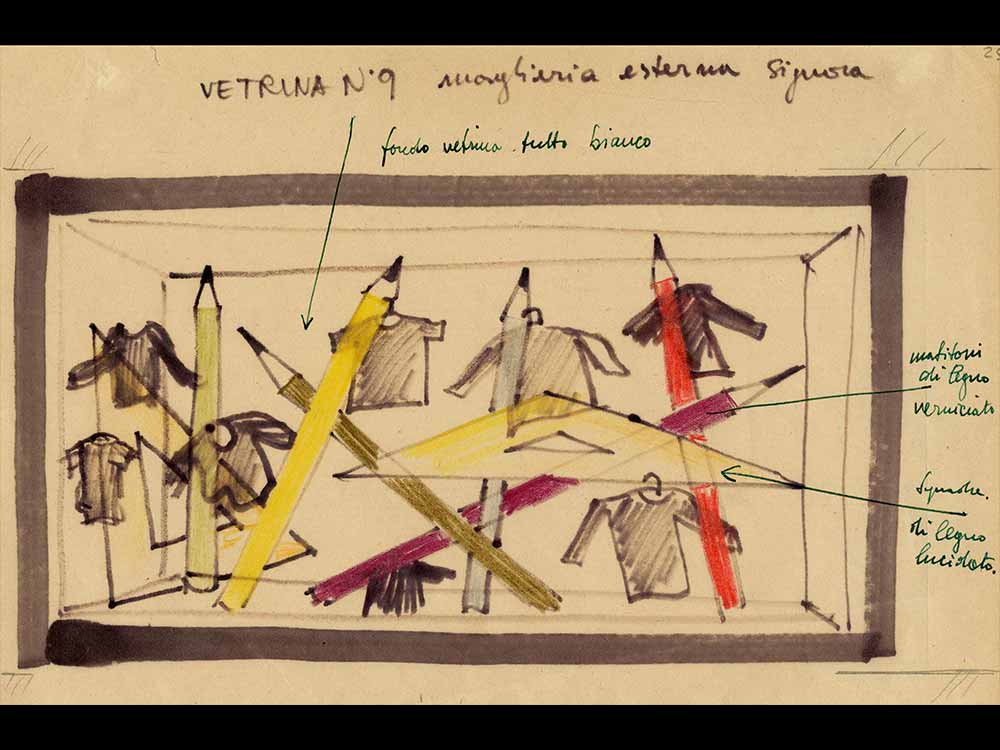
2 / 107 — Shop window, Albe Steiner, studio per allestimento della vetrina "Maglieria esterna signora", 1950-1955
Mixed media on paper

3 / 107 — Shop window, Albe Steiner, studio per allestimento di vetrina natalizia, 1950-1955
Mixed media on paper
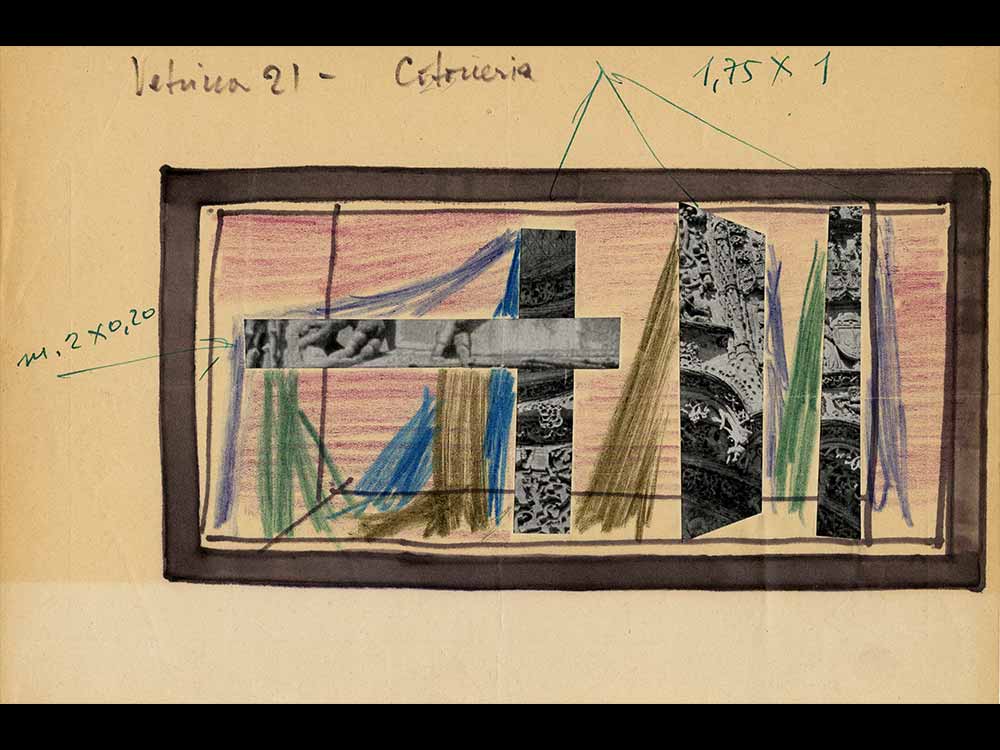
4 / 107 — Shop window, Albe Steiner, studio per allestimento della vetrina "Cotoneria", 1950-1955
Collage and mixed media on paper

5 / 107 — Shop window, Albe Steiner, studio per allestimento della vetrina "Calze uomo", 1950-1955
Collage and mixed media on paper

6 / 107 — Shop window, Albe Steiner, studio per allestimento della vetrina Rinascente Upim "Abbigliamento invernale", 1950
Mixed media on paper
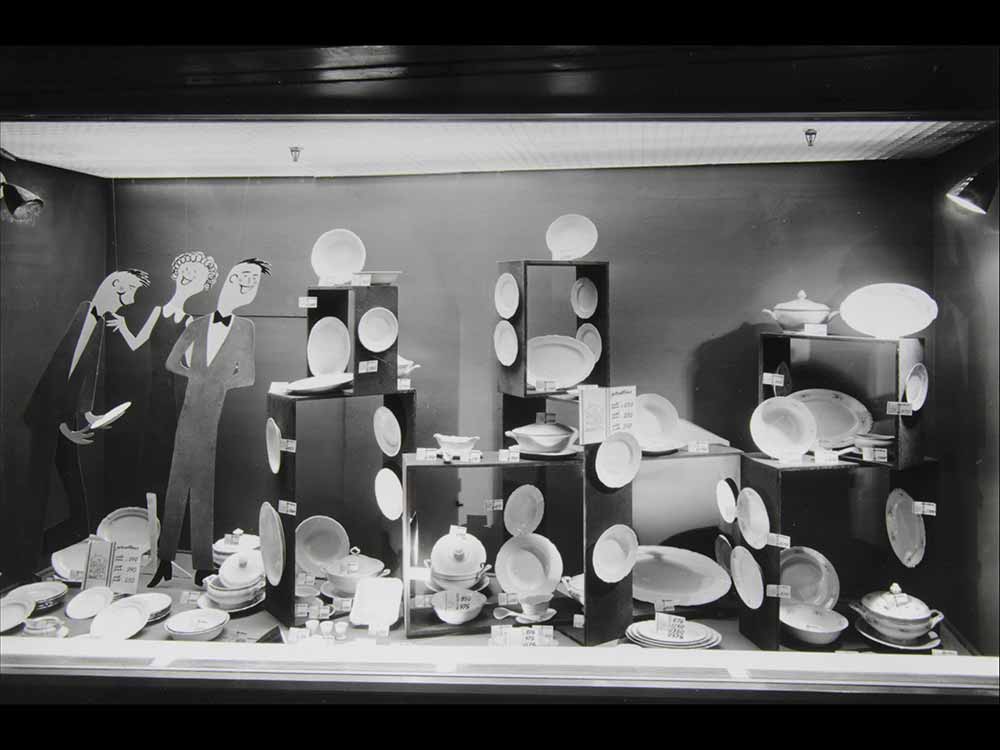
7 / 149 — Shop window, Albe Steiner, servizi di porcellana, 1950-1955

8 / 107 — Shop window, Albe Steiner, LR moda donna, 1951
Mixed media on paper
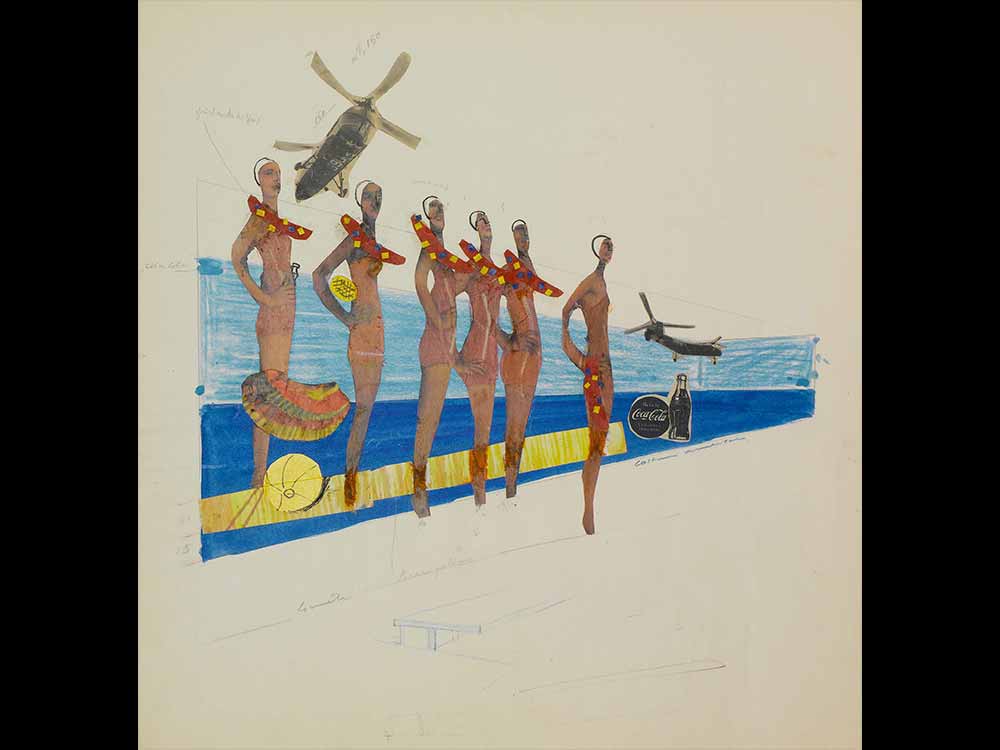
9 / 107 — Shop window, Roberto Sambonet, bozzetto per allestimento vetrina "Costumi americani", 1955 ca.
Collage and mixed media on paper

10 / 107 — Shop window, Roberto Sambonet, bozzetto per allestimento vetrina "Aria aperta", 1955 ca.
Collage and mixed media on paper
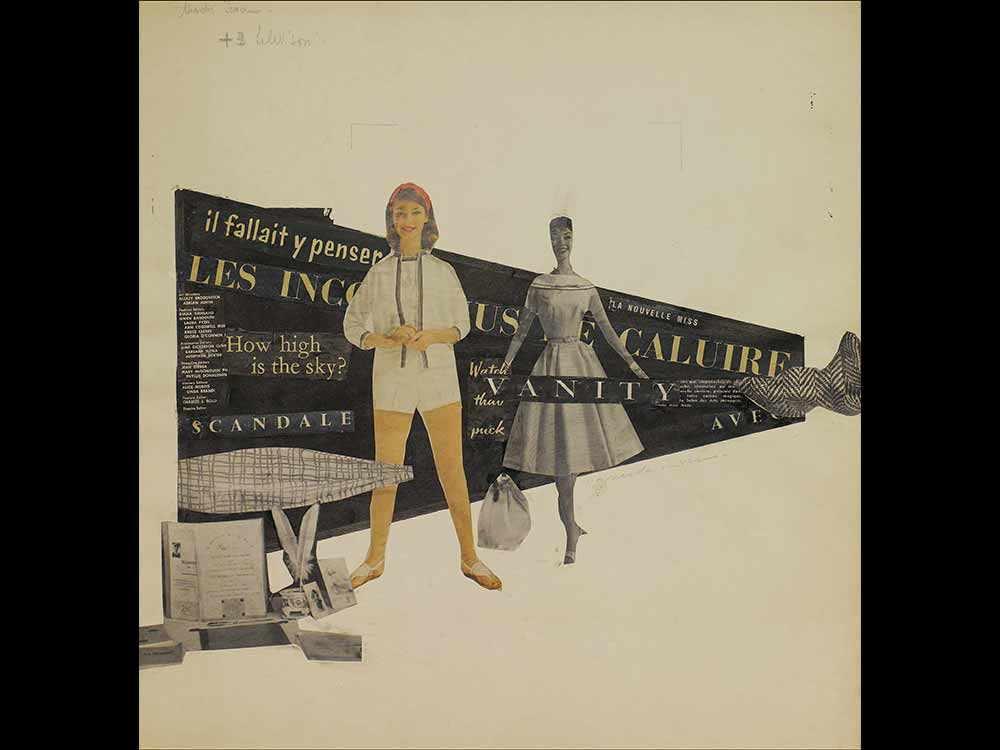
11 / 107 — Shop window, Roberto Sambonet, bozzetto per allestimento vetrina "Moda in inverno", 1955 ca.
Collage and pencil on paper
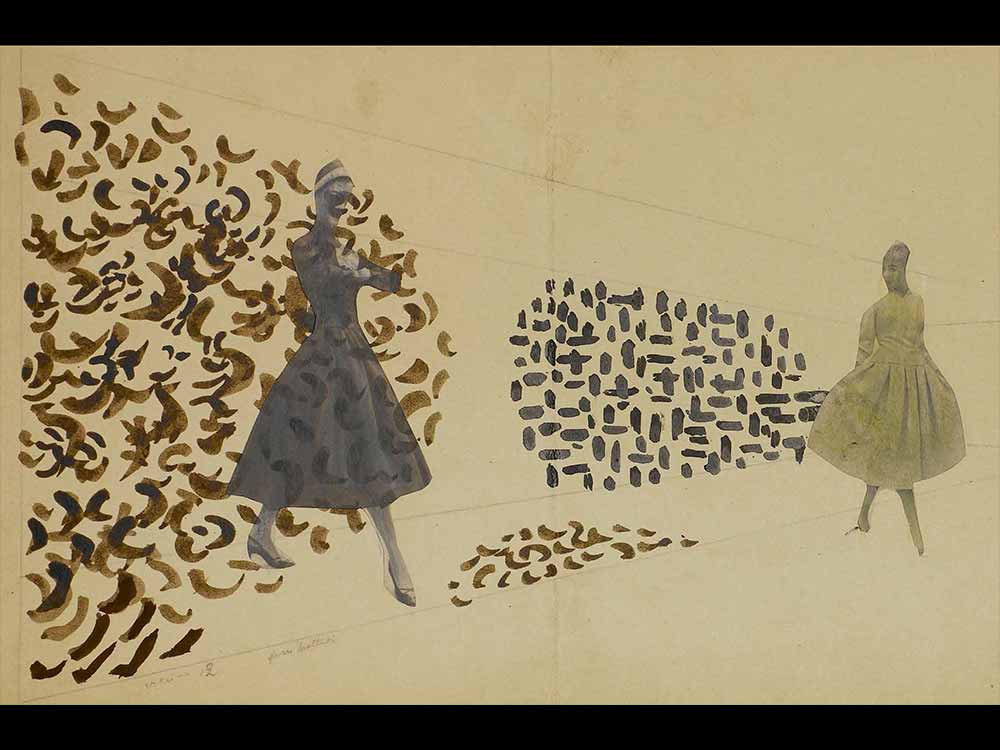
12 / 107 — Shop window, Roberto Sambonet, bozzetto per allestimento di vetrina", 1955 ca.
Collage and mixed media on paper

13 / 107 — Shop window, Roberto Sambonet, bozzetto per allestimento di vetrina", 1955 ca.
Collage and pencil on paper
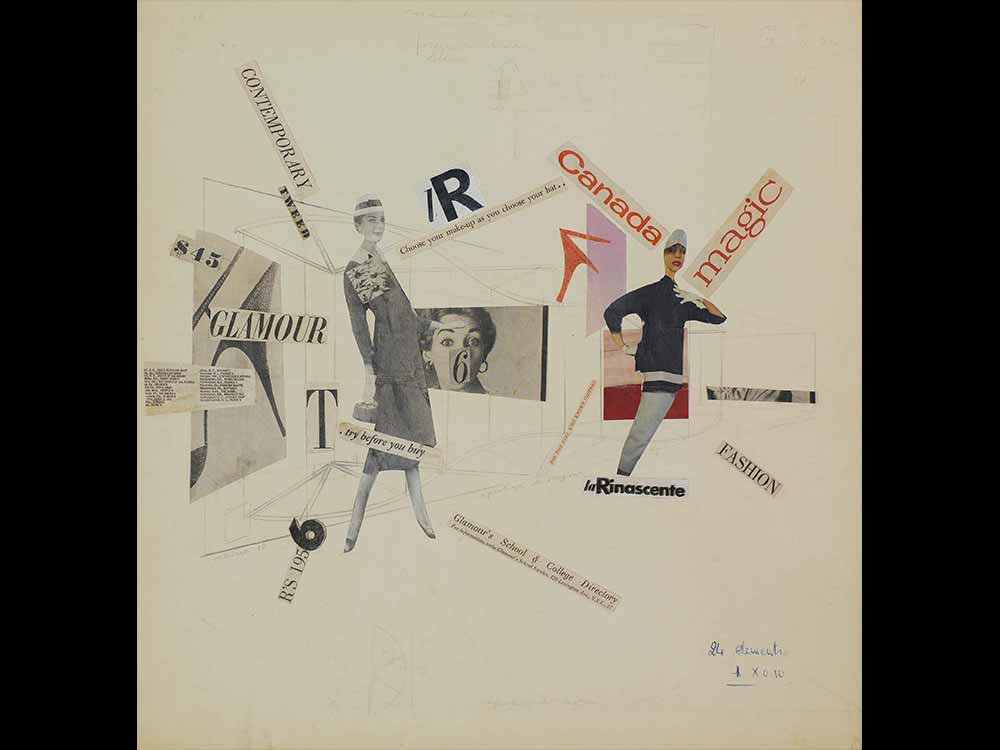
14 / 107 — Shop window, Roberto Sambonet, bozzetto per allestimento della vetrina "Glamour. Apertura di stagione", 1956 ca.
Collage and mixed media on paper

15 / 107 — Shop window, Roberto Sambonet, vetrina "Glamour. Apertura di stagione", 1956 ca.
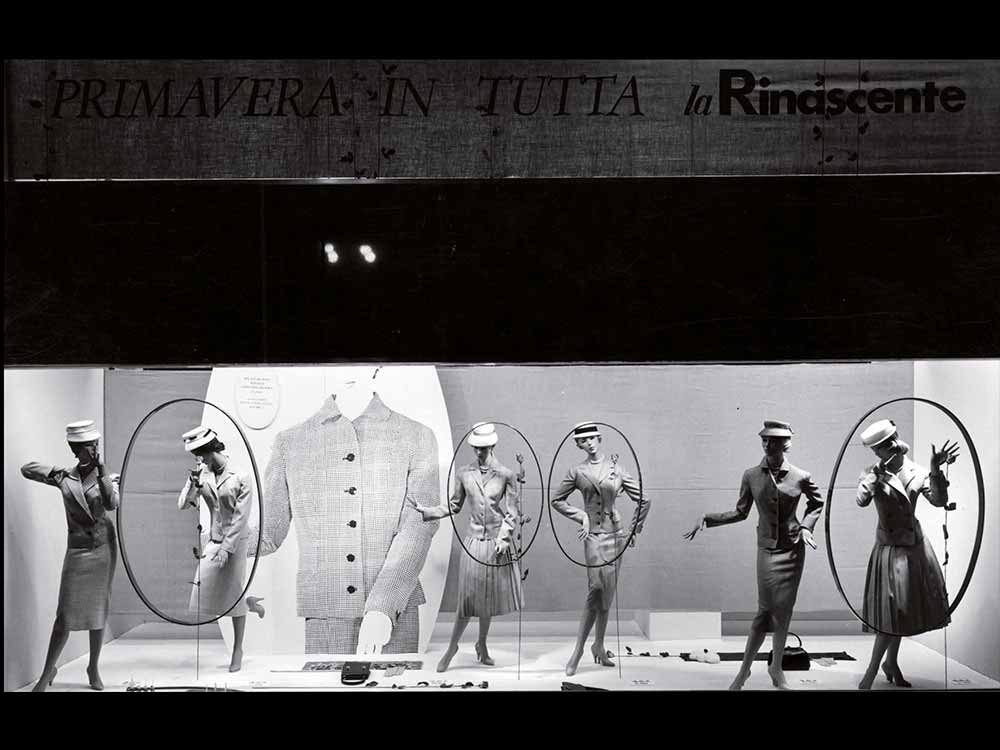
16 / 107 — Shop window, Roberto Sambonet, vetrina "Primavera in tutta la Rinascente", 1957

17 / 107 — Shop window, Roberto Sambonet, vetrina "Capodanno", 1958-1959
Mixed media on paper

18 / 107 — Shop window, Roberto Sambonet, vetrina "La casa nel 59", 1959

19 / 107 — Shop window, Tomás Maldonado, Moda 1968 primavera estate Upim, 1968
UPIM corporate image project

20 / 107 — Shop window, Tomás Maldonado, vetrina "Bianco" all'Upim, 1968 ca.
UPIM corporate image project

21 / 107 — External installation, Paola Lanzani, intervento cinetico per il Natale sotto i portici de la Rinascente di Milano Piazza Duomo, 1970

22 / 107 — Shop window, Piercarla Toscano Lanzani Racchelli, vetrina moda donna a la Rinascente di Milano Piazza Duomo, 1982-1987
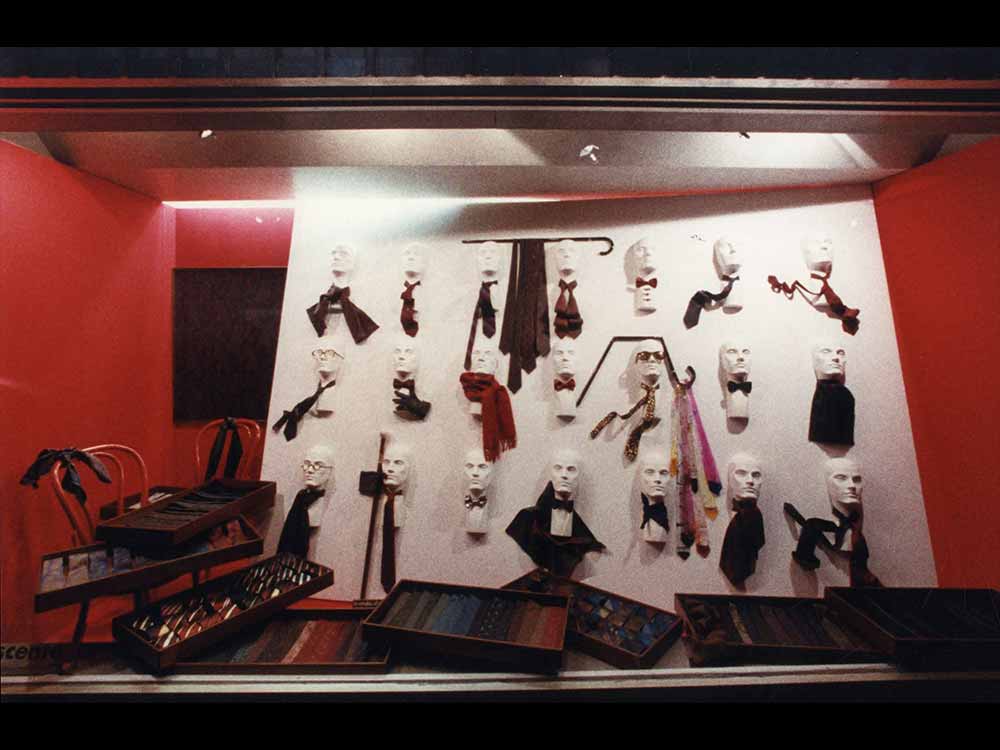
23 / 107 — Shop window, Piercarla Toscano Lanzani Racchelli, vetrina accessori uomo a la Rinascente di Milano Piazza Duomo, 1982-1987
Mixed media on paper
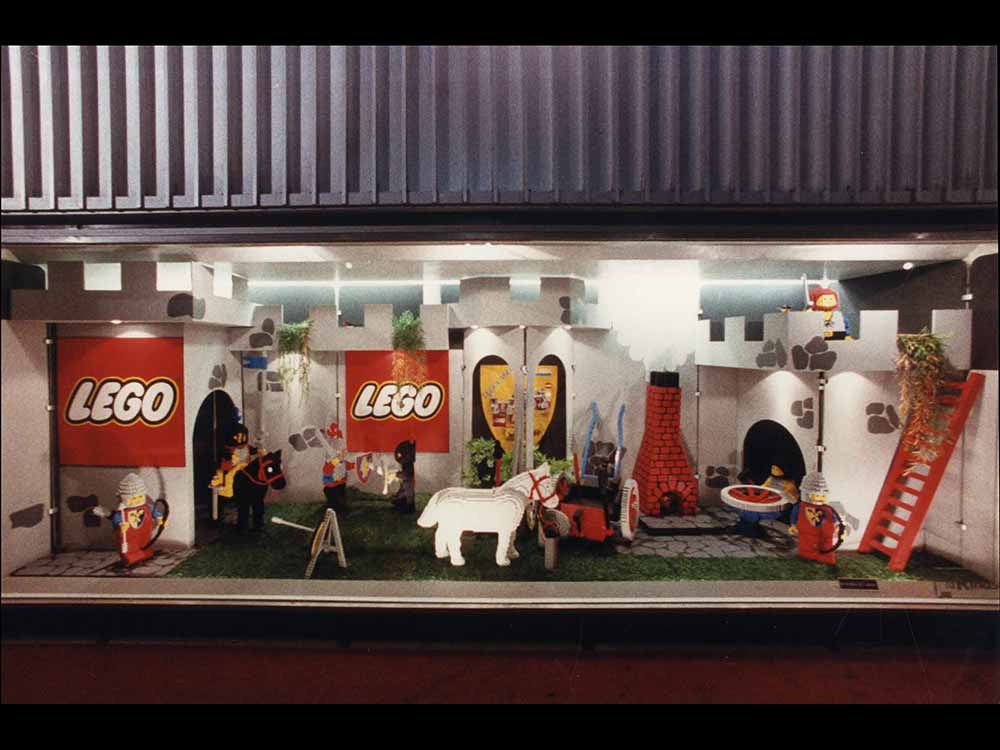
24 / 107 — Shop window, Piercarla Toscano Lanzani Racchelli, vetrina "Lego" a la Rinascente di Milano Piazza Duomo, 1982-1987
Mixed media on paper

25 / 107 — Shop window, Piercarla Toscano Lanzani Racchelli, vetrina de la Rinascente di Milano Piazza Duomo, 1982-1987
Mixed media on paper
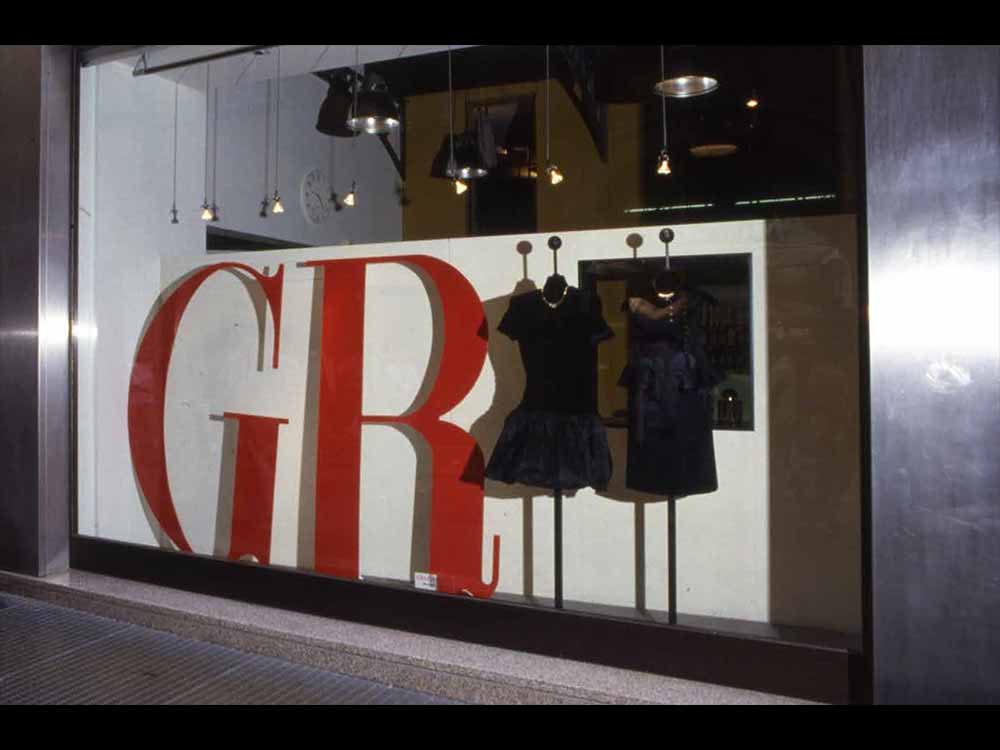
26 / 107 — Shop window, Piercarla Toscano Lanzani Racchelli, vetrina dedicata alla rivista "Grazia" a la Rinascente di Genova, 1982-1987
Mixed media on paper
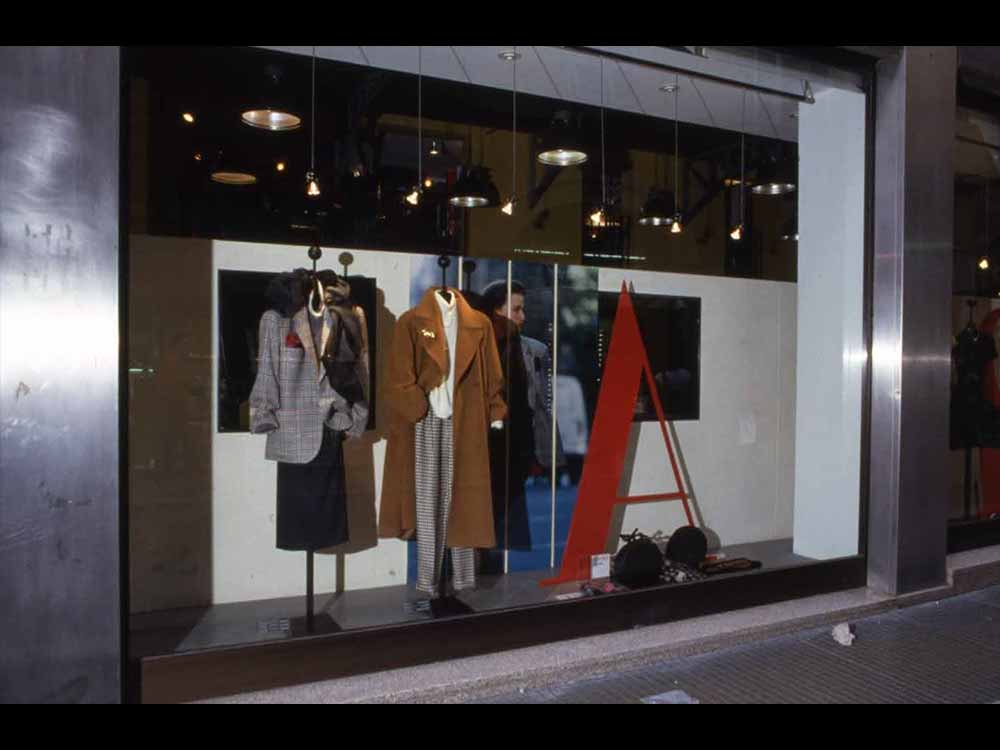
27 / 107 — Shop window, Piercarla Toscano Lanzani Racchelli, vetrina dedicata alla rivista "Grazia" a la Rinascente di Genova, 1982-1987
Mixed media on paper

28 / 107 — Shop window, Piercarla Toscano Lanzani Racchelli, vetrina dedicata alla rivista "Grazia" a la Rinascente di Genova, 1982-1987
Mixed media on paper
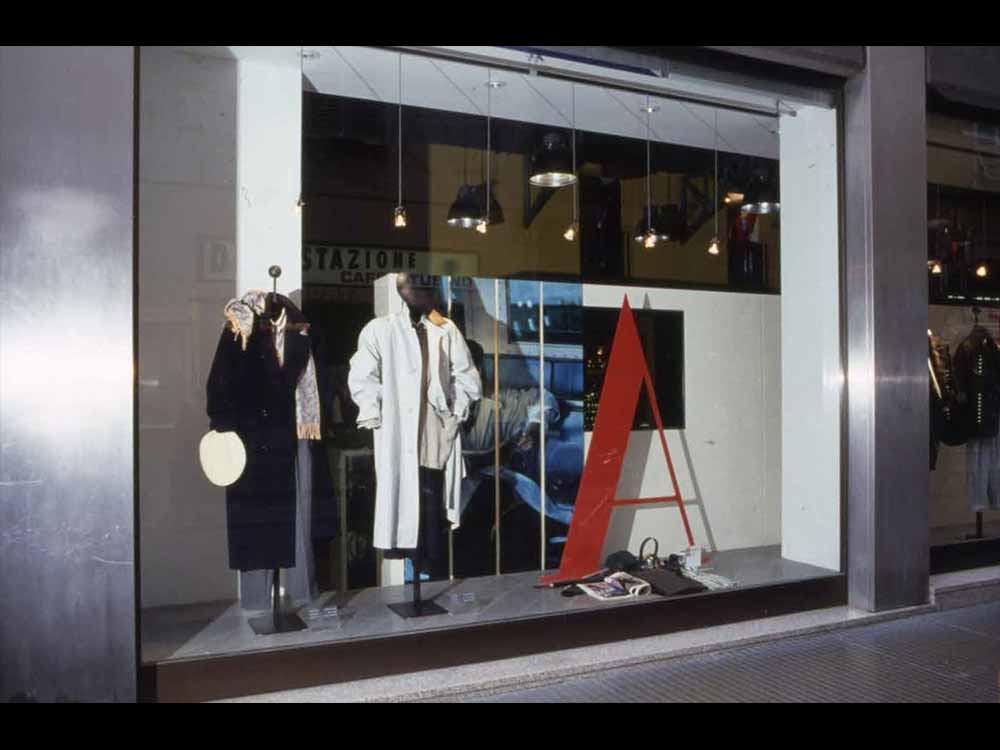
29 / 107 — Shop window, Piercarla Toscano Lanzani Racchelli, vetrina dedicata alla rivista "Grazia" a la Rinascente di Genova, 1982-1987
Mixed media on paper
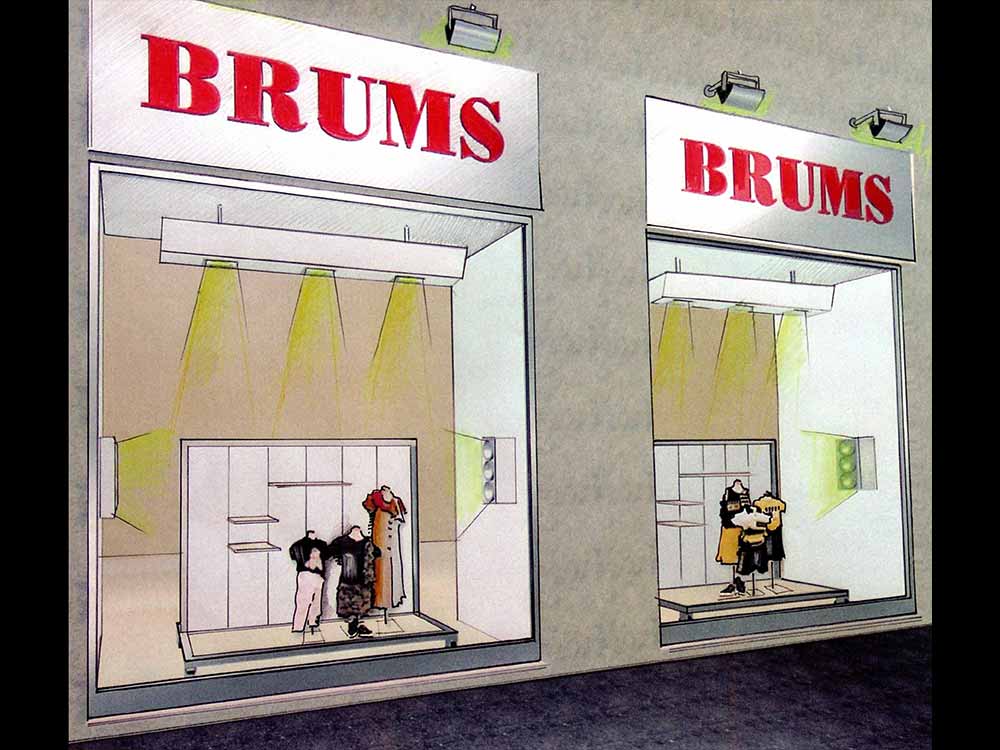
30 / 107 — Shop window, Piercarla Toscano Lanzani Racchelli, progetto di vetrine Brums per la Rinascente, 2001-2002
Mixed media on paper

31 / 107 — Shop window, Piercarla Toscano Lanzani Racchelli, vetrina de la Rinascente di Milano Piazza Duomo, 1982-1987
Mixed media on paper

32 / 107 — Shop window, Piercarla Toscano Lanzani Racchelli, particolare di vetrina de la Rinascente di Milano Piazza Duomo, 1982-1987
Mixed media on paper

33 / 107 — Shop window, Piercarla Toscano Lanzani Racchelli, particolare di vetrina de la Rinascente di Milano Piazza Duomo, 1982-1987
Mixed media on paper

34 / 107 — Shop window, Piercarla Toscano Lanzani Racchelli, vetrina de la Rinascente di Milano Piazza Duomo, 1982-1987
Mixed media on paper
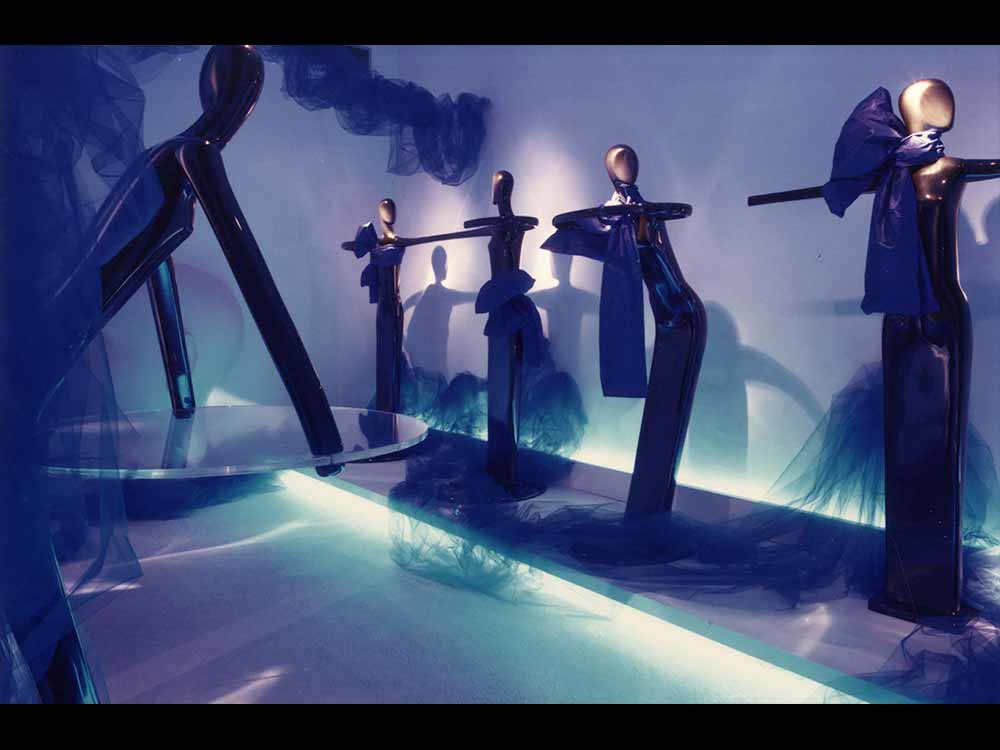
35 / 107 — Shop window, Piercarla Toscano Lanzani Racchelli, vetrina de la Rinascente di Milano Piazza Duomo, 1982-1987
Mixed media on paper

36 / 107 — Shop window, Piercarla Toscano Lanzani Racchelli, particolare di vetrina de la Rinascente di Milano Piazza Duomo, 1982-1987
Mixed media on paper

37 / 107 — External installation, Ettore Mariani, Natale, 1979
Graphic project Ettore Mariani
Illustration Francesca Cantarelli
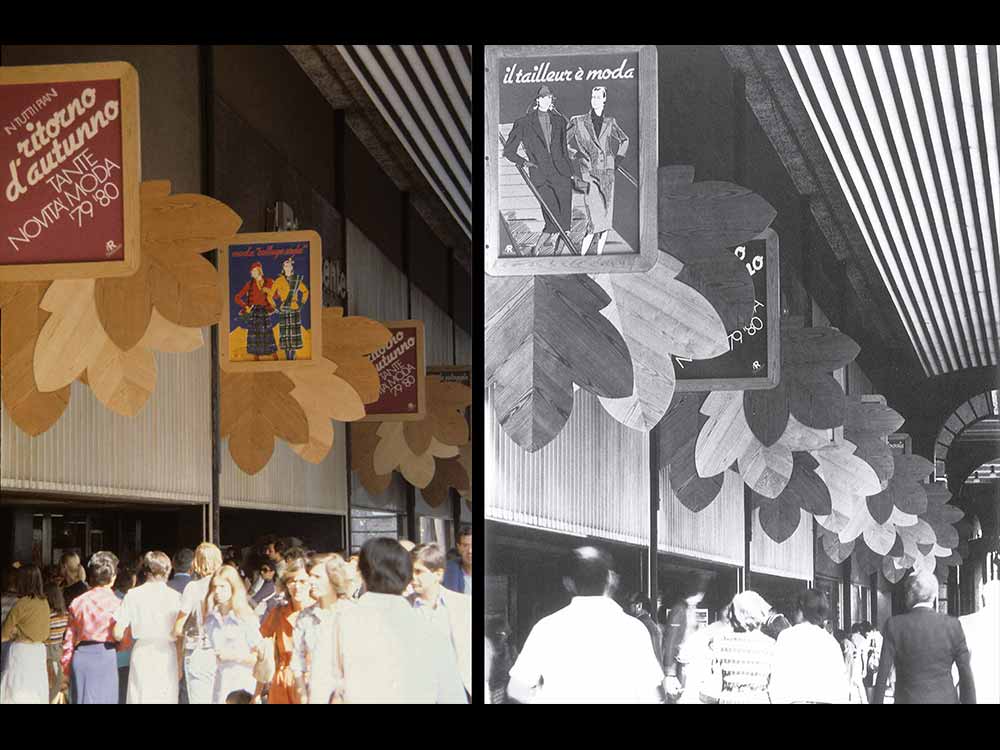
38 / 107 — External installation, Ettore Mariani, Ritorno d'autunno, 1979
Graphic project Ettore Mariani
Illustration Arie Vervelde

39 / 107 — External installation, Ettore Mariani, Fiera del Bianco, 1980
Graphic project Ettore Mariani

40 / 107 — External installation, Ettore Mariani, È primavera. LR Duomo, 1980
Graphic project Ettore Mariani
Illustration Werner
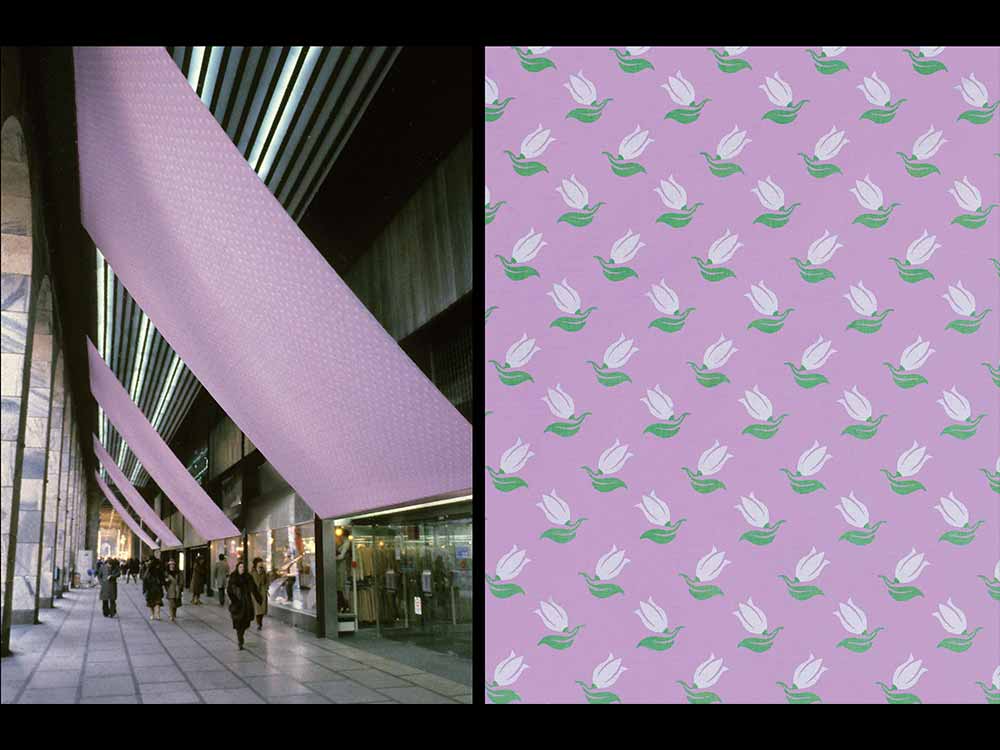
41 / 107 — External installation, Ettore Mariani, Bianco 1981LR, 1981
Graphic project Ettore Mariani
Modular design on fabric for installation

42 / 107 — External installation, Ettore Mariani, Natale, 1982
Progetto Ettore Mariani
Kinetic installation with moving lighting objects in chromatic sequence
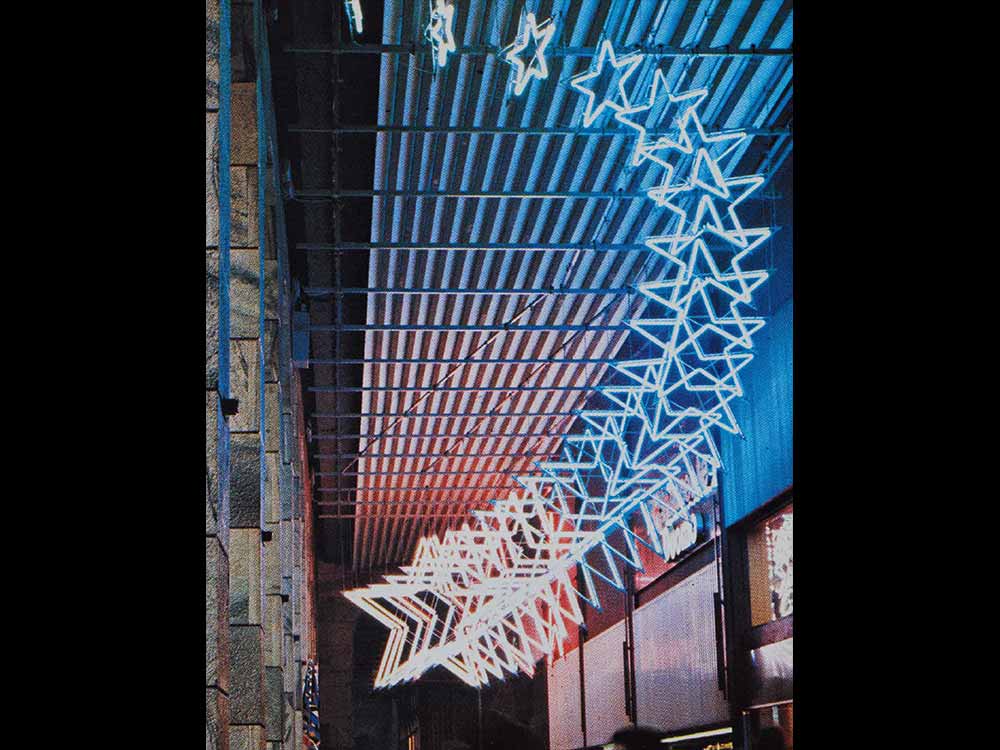
43 / 107 — External installation, Ettore Mariani, Natale, 1982
Progetto Ettore Mariani
Kinetic installation with moving lighting objects in chromatic sequence
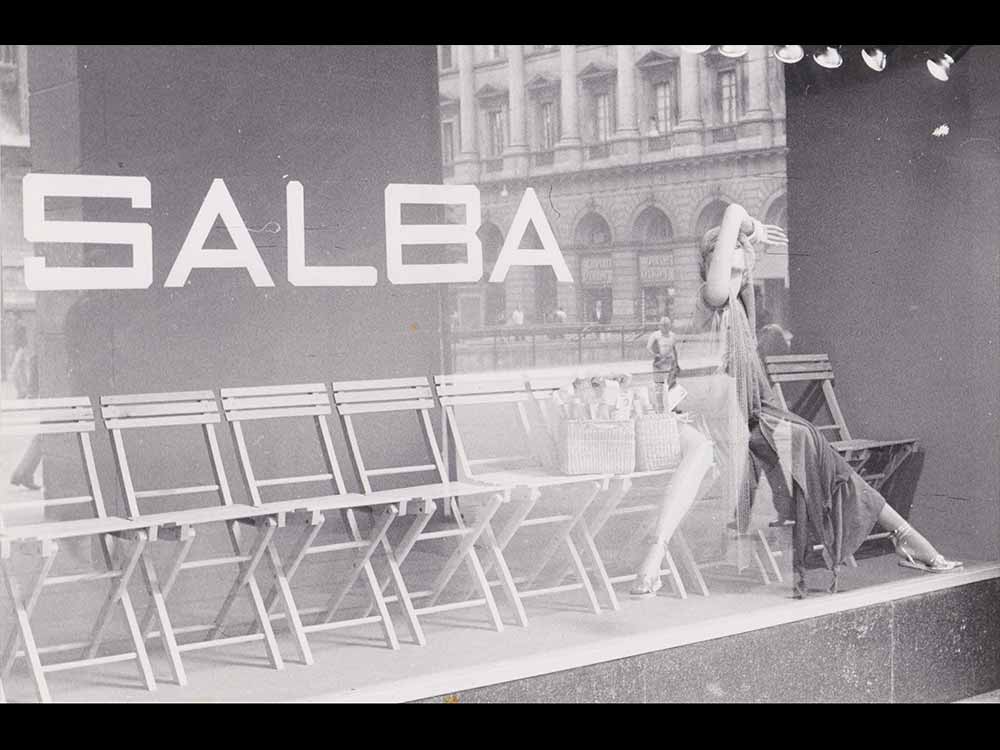
44 / 107 — Shop window, Giorgio Pulici, Salba, 1975
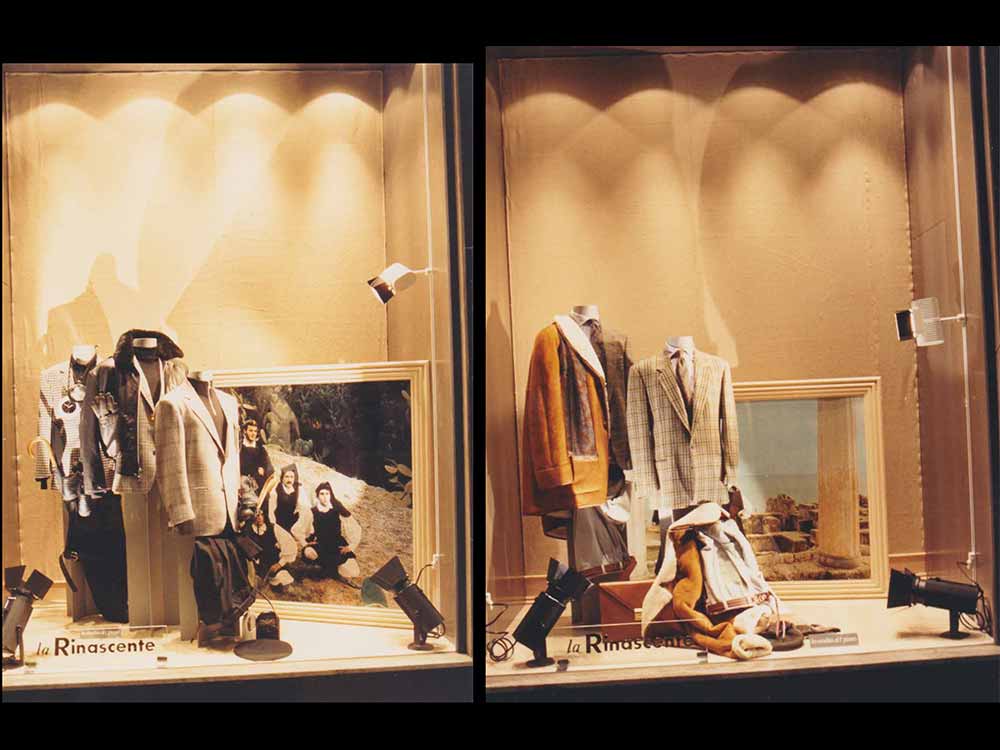
45 / 107 — Shop window, Giorgio Pulici, vetrine per la Rinascente di Cagliari, 1987
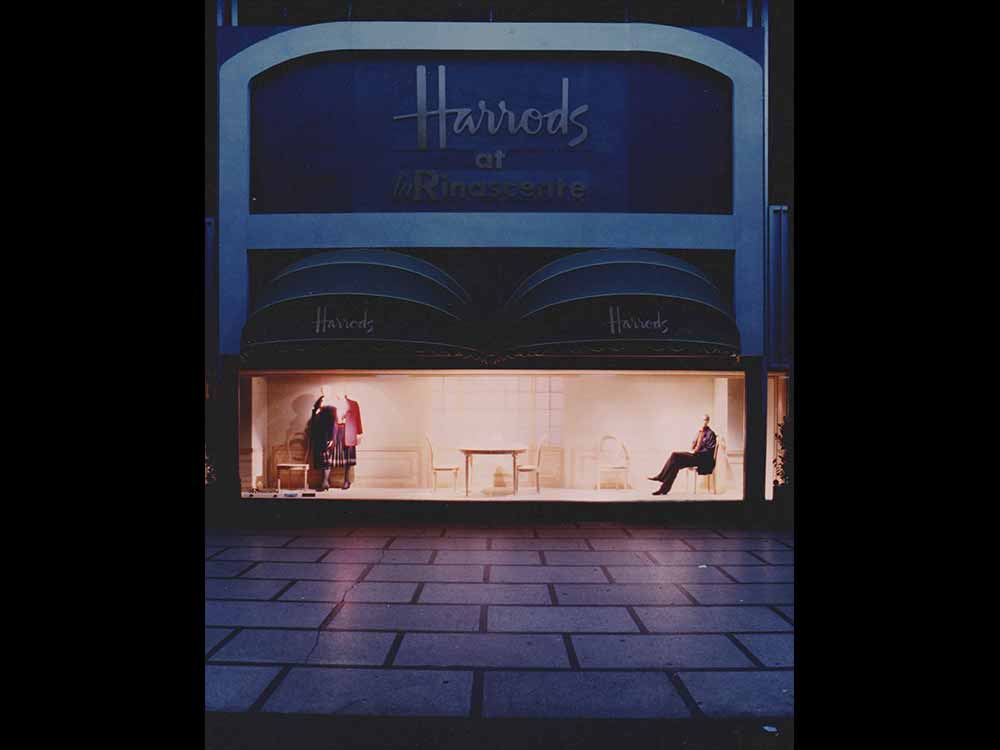
46 / 107 — Shop window, Giorgio Pulici, Harrods at la Rinascente, 1994

47 / 107 — Shop window, Giorgio Pulici, Harrods at la Rinascente, 1994

48 / 107 — Shop window, Giorgio Pulici, Harrods at la Rinascente, 1994

49 / 107 — Shop window, Giorgio Pulici, Cina, 1995

50 / 107 — Shop window, Giorgio Pulici, vetrina per la Rinascente di Milano, Piazza del Duomo, 1996
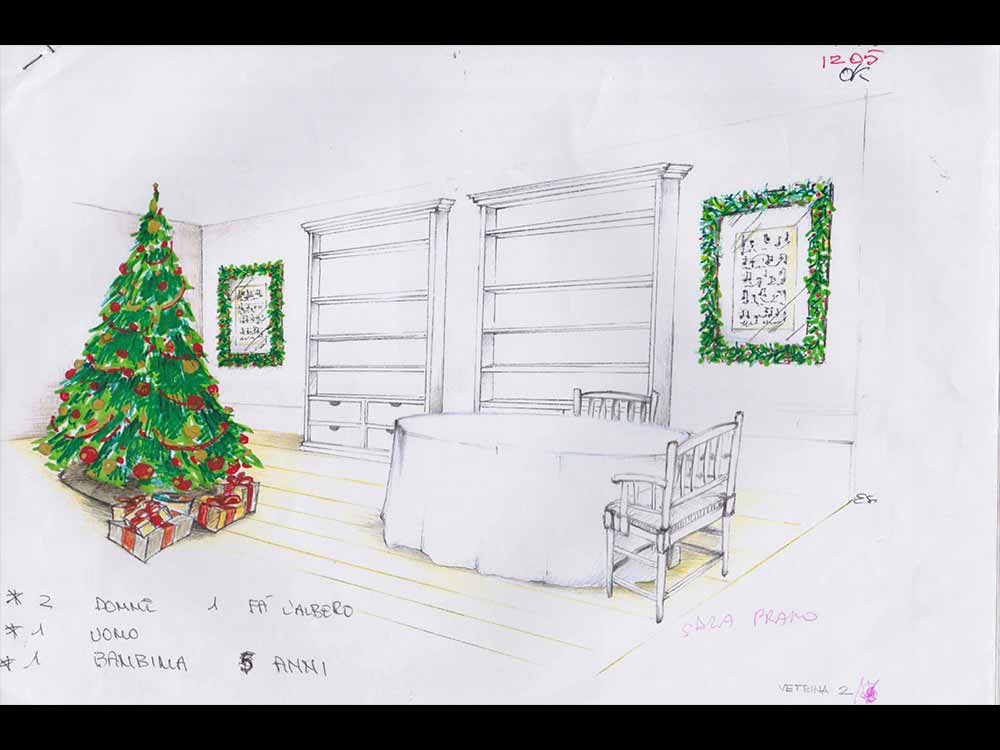
51 / 107 — Shop window, Giorgio Pulici, progetto per allestimento di vetrine "Natale", 1997
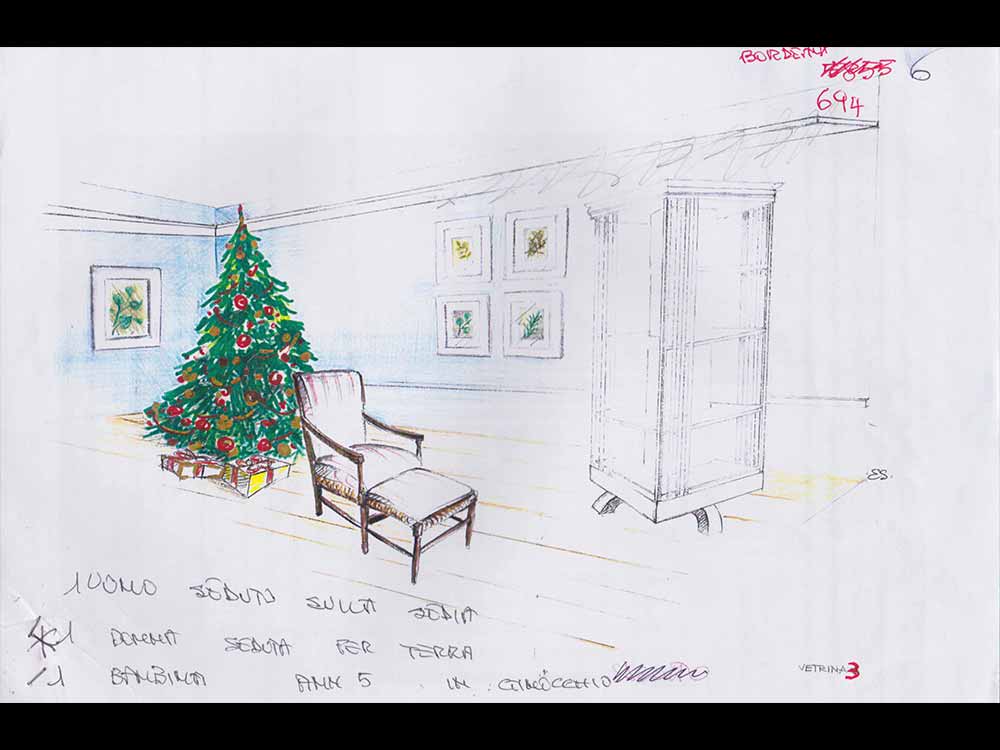
52 / 107 — Shop window, Giorgio Pulici, progetto per allestimento di vetrine "Natale", 1997
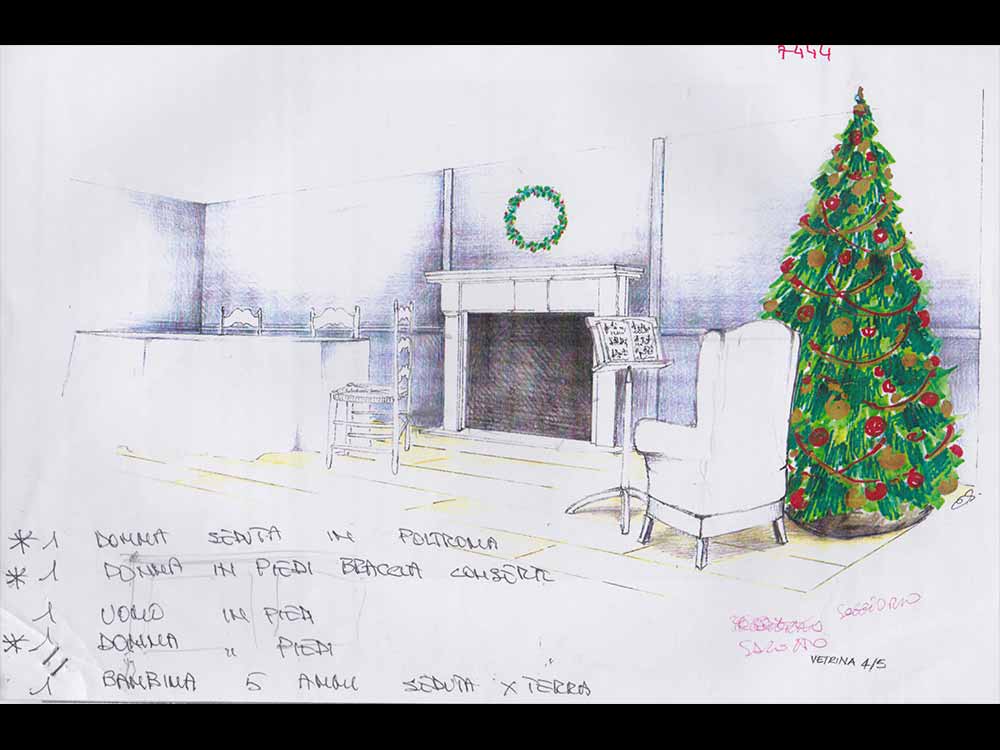
53 / 107 — Shop window, Giorgio Pulici, progetto per allestimento di vetrine "Natale", 1997
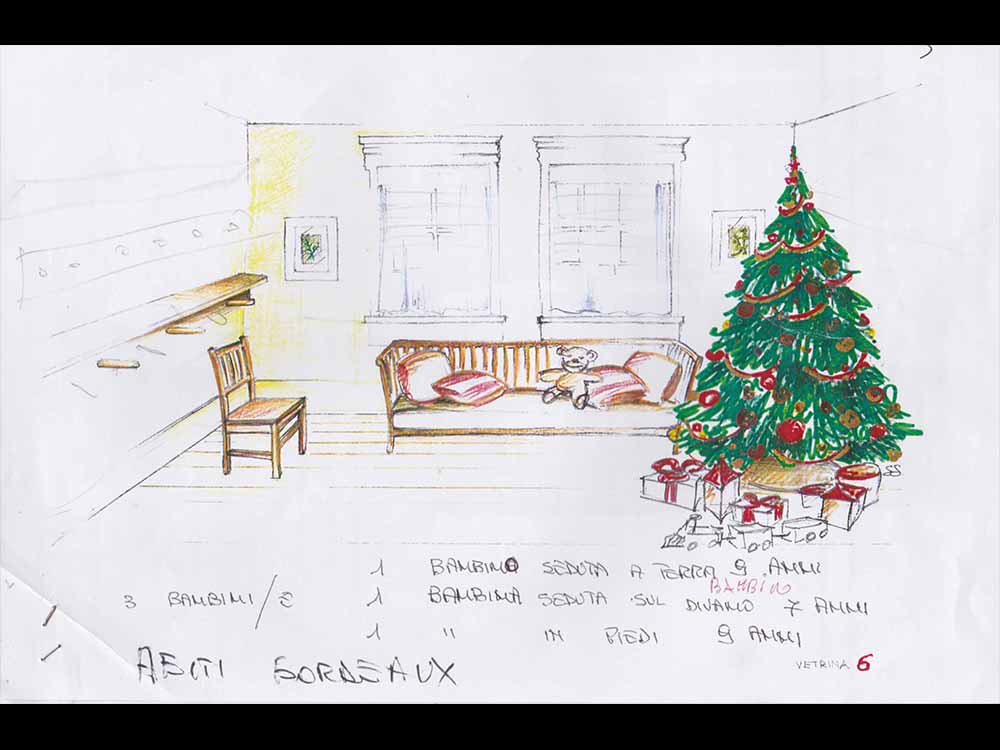
54 / 107 — Shop window, Giorgio Pulici, progetto per allestimento di vetrine "Natale", 1997

55 / 107 — Shop window, Giorgio Pulici, progetto per allestimento di vetrine "Natale", 1997

56 / 107 — Shop window, Giorgio Pulici, vetrina per la Rinascente di Milano, Piazza del Duomo, 1999
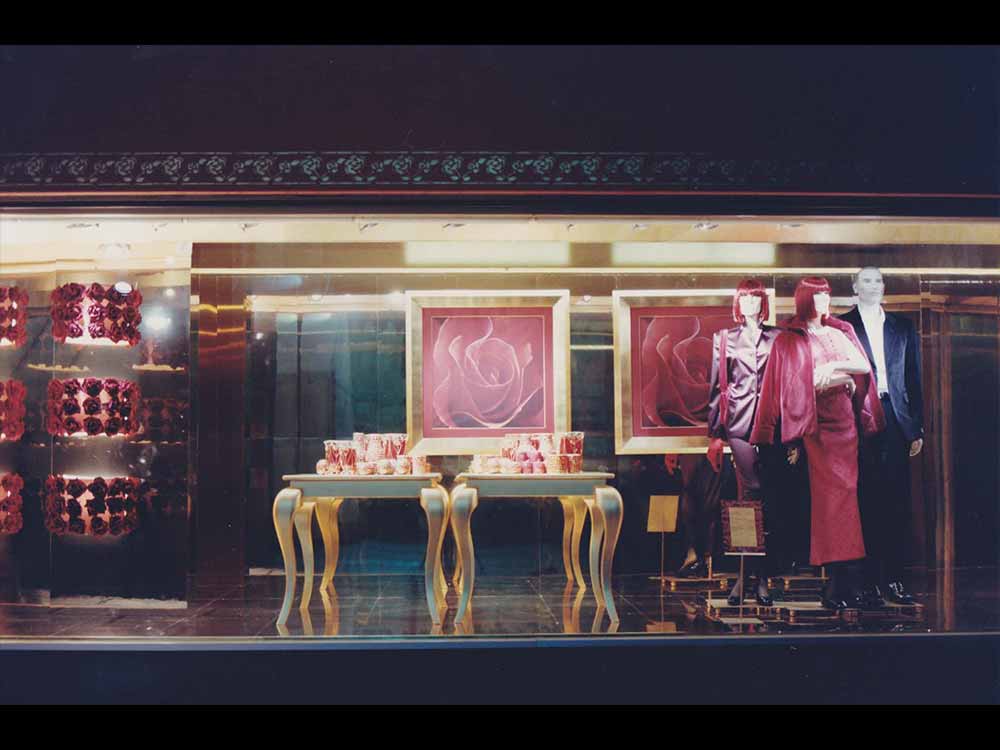
57 / 107 — Shop window, Giorgio Pulici, vetrina per la Rinascente di Milano, Piazza del Duomo, 1999
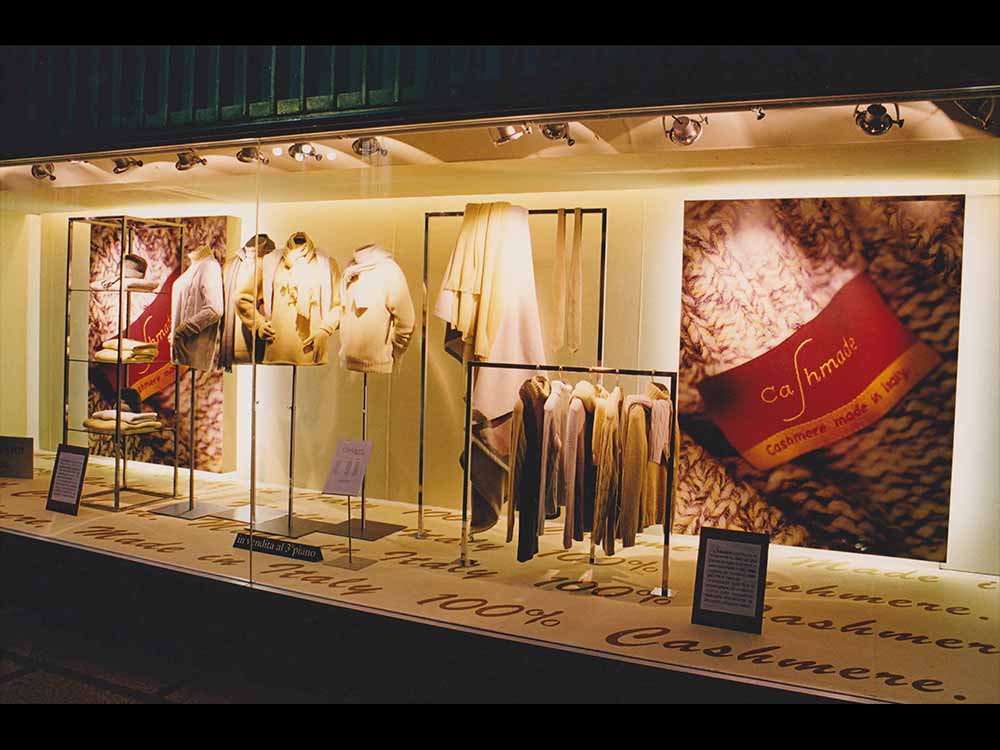
58 / 107 — Shop window, Giorgio Pulici, cashmere, 2000
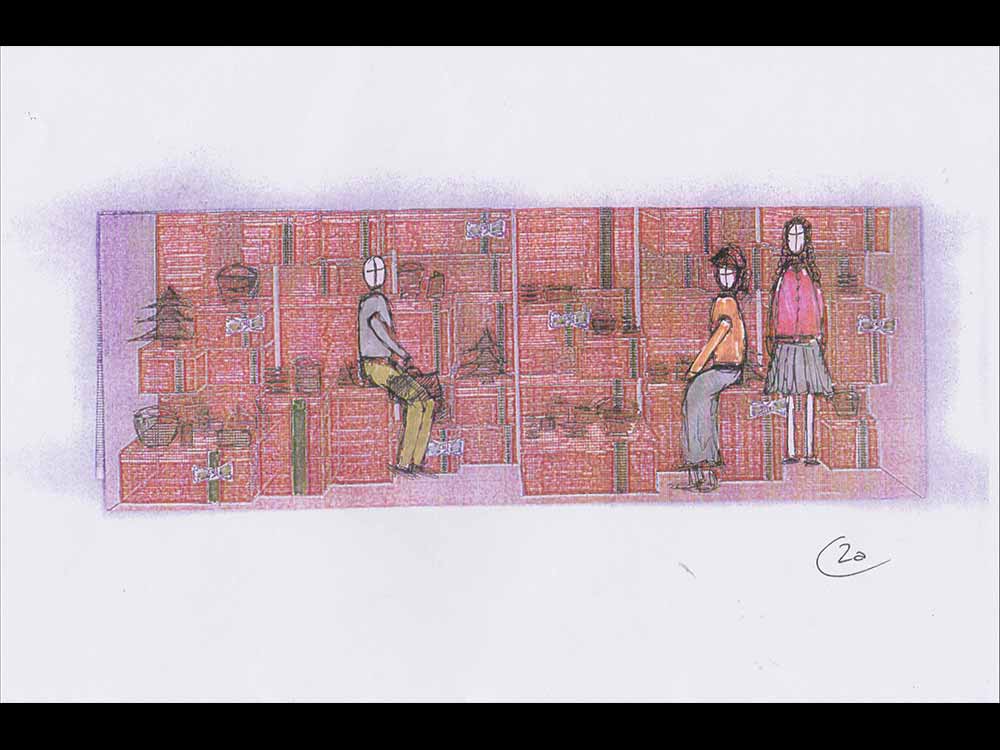
59 / 107 — Shop window, Giorgio Pulici, progetto per allestimento di vetrine "Buon Natale", 2000
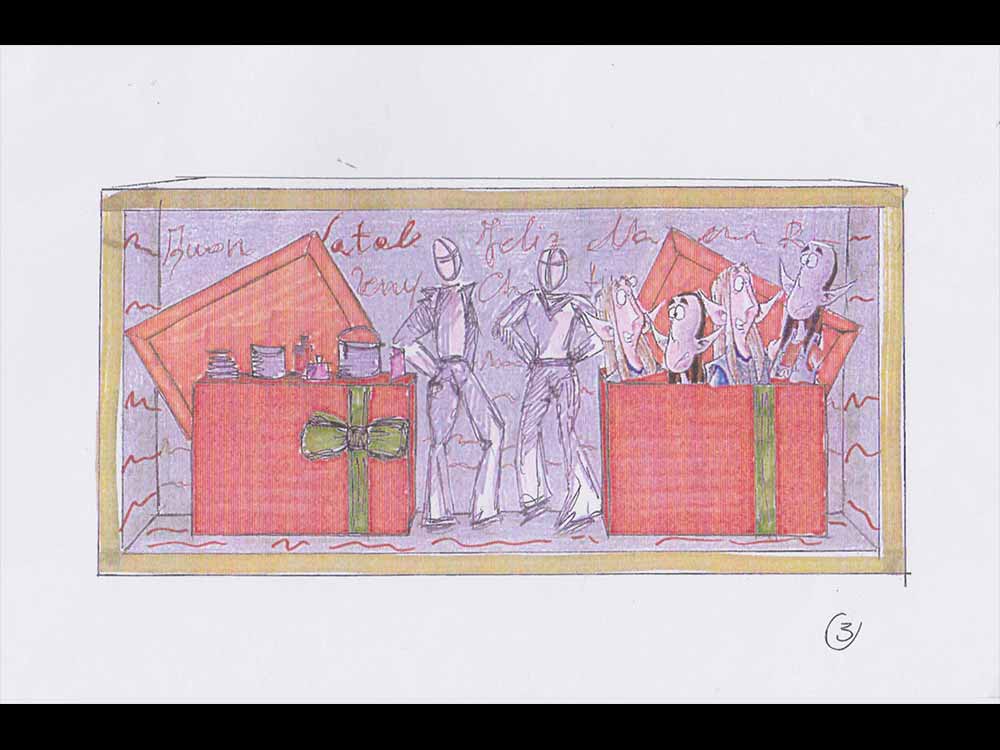
60 / 107 — Shop window, Giorgio Pulici, progetto per allestimento di vetrine "Buon Natale", 2000
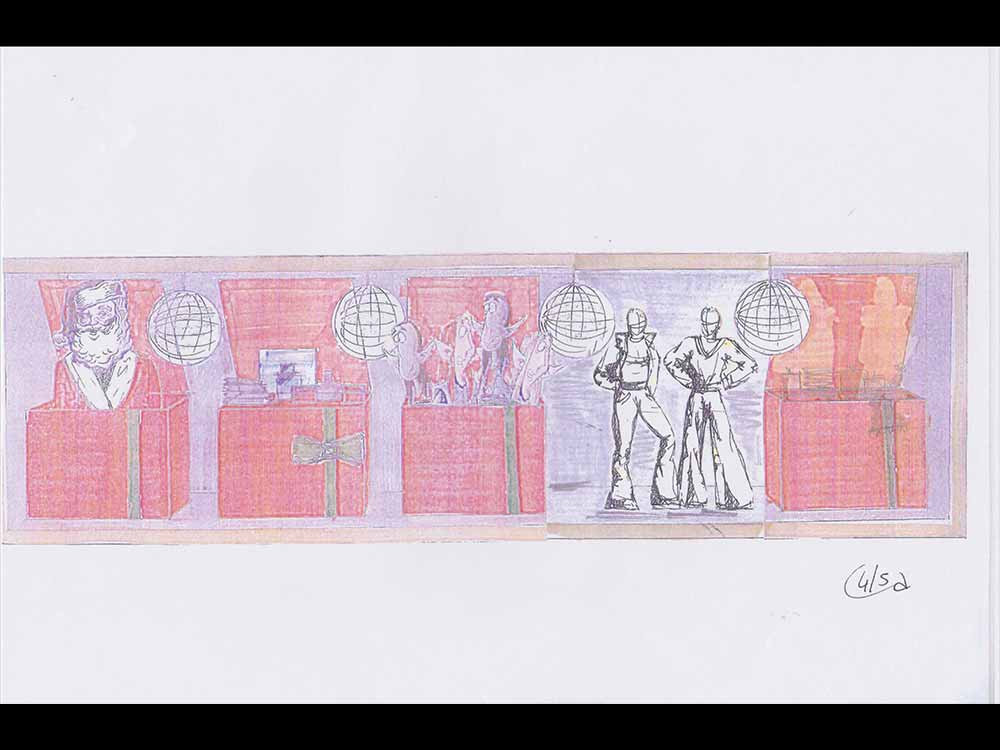
61 / 107 — Shop window, Giorgio Pulici, progetto per allestimento di vetrine "Buon Natale", 2000

62 / 107 — Shop window, Giorgio Pulici, progetto per allestimento di vetrine "Buon Natale", 2000

63 / 107 — Shop window, Giorgio Pulici, progetto per allestimento di vetrine "Buon Natale", 2000
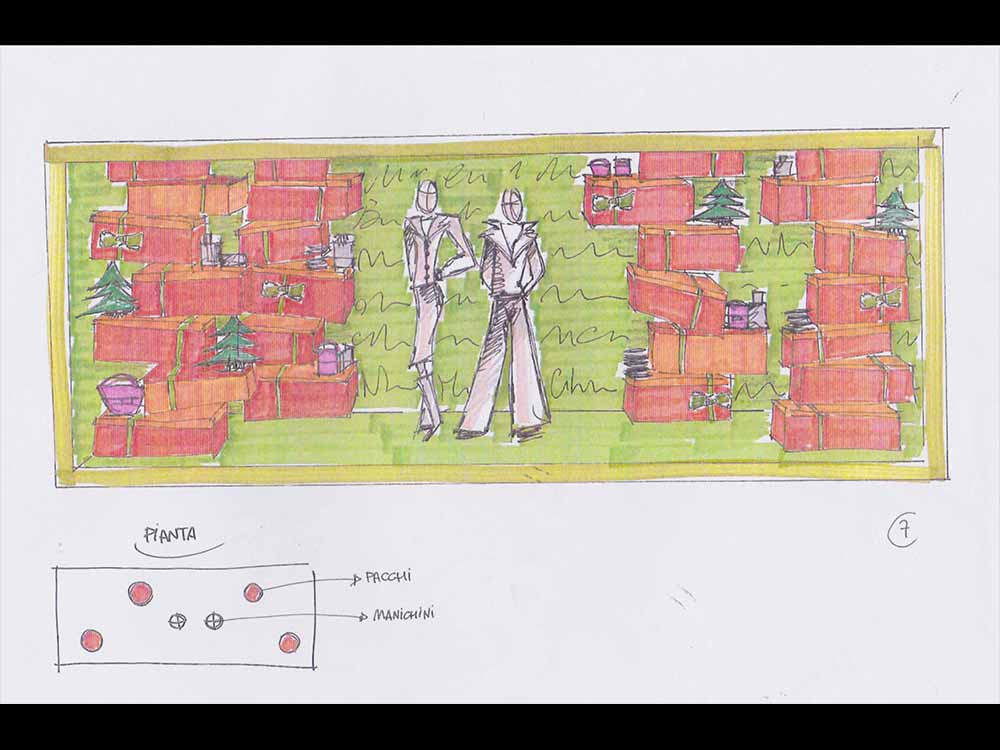
64 / 107 — Shop window, Giorgio Pulici, progetto per allestimento di vetrine "Buon Natale", 2000
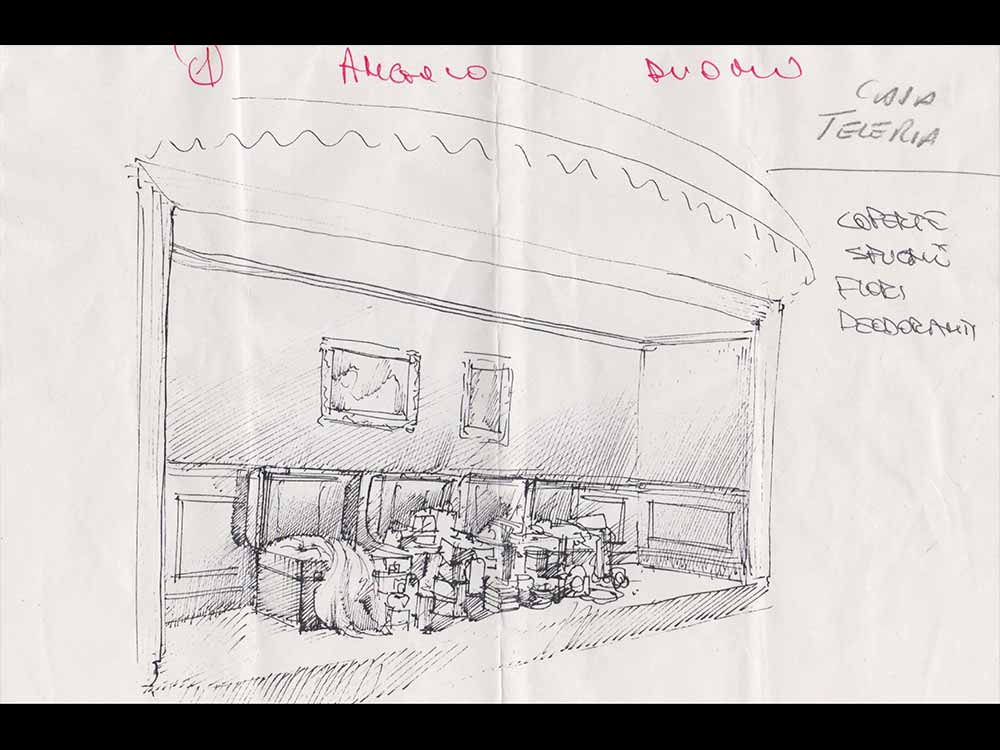
65 / 107 — Shop window, Giorgio Pulici, progetto per allestimento di vetrine LR, 2000
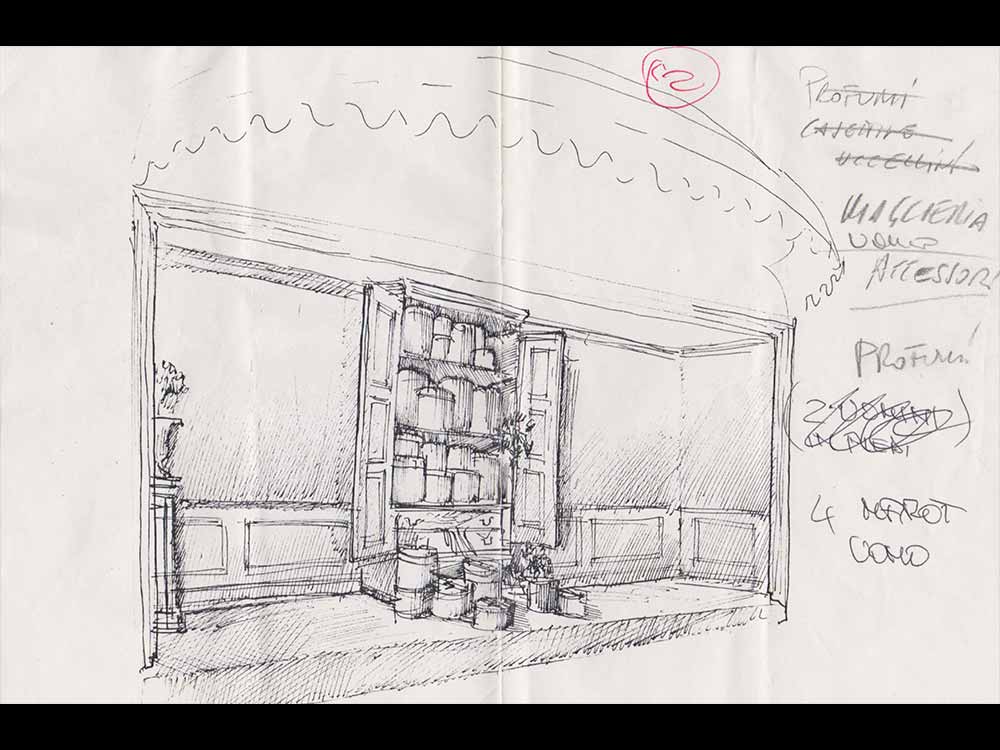
66 / 107 — Shop window, Giorgio Pulici, progetto per allestimento di vetrine LR, 2000
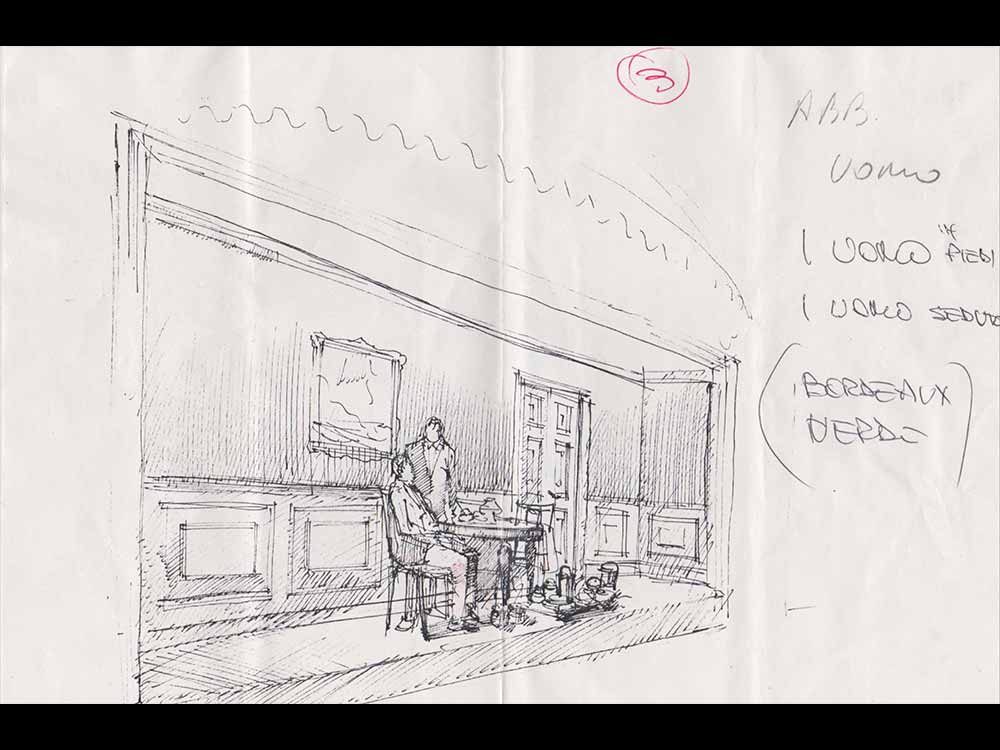
67 / 107 — Shop window, Giorgio Pulici, progetto per allestimento di vetrine LR, 2000
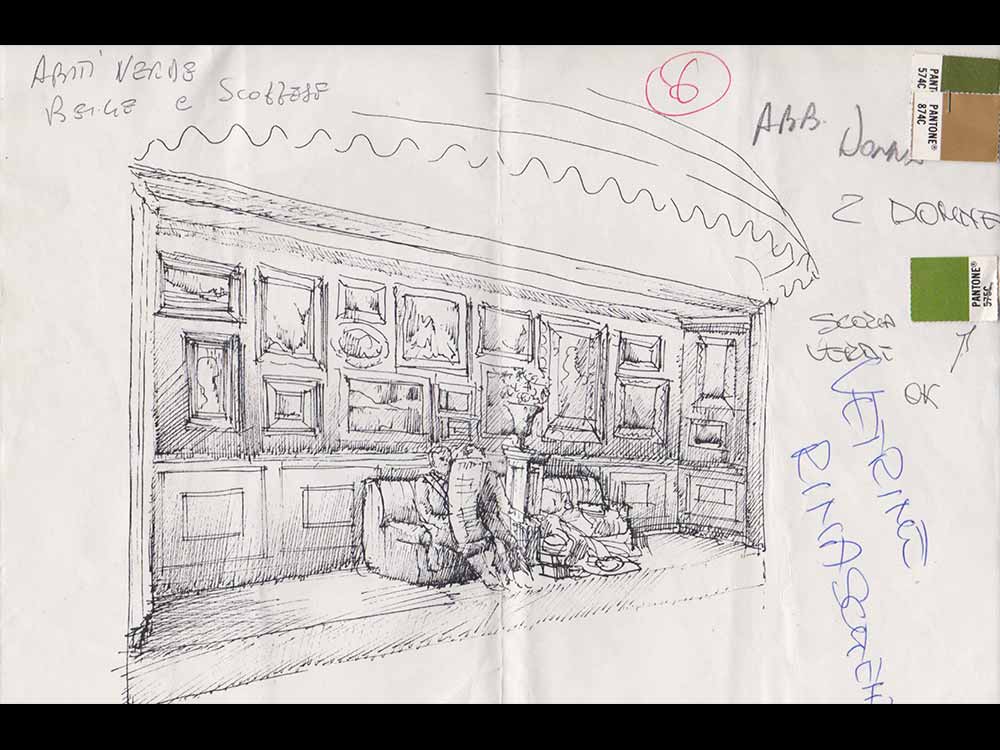
68 / 107 — Shop window, Giorgio Pulici, progetto per allestimento di vetrine LR, 2000
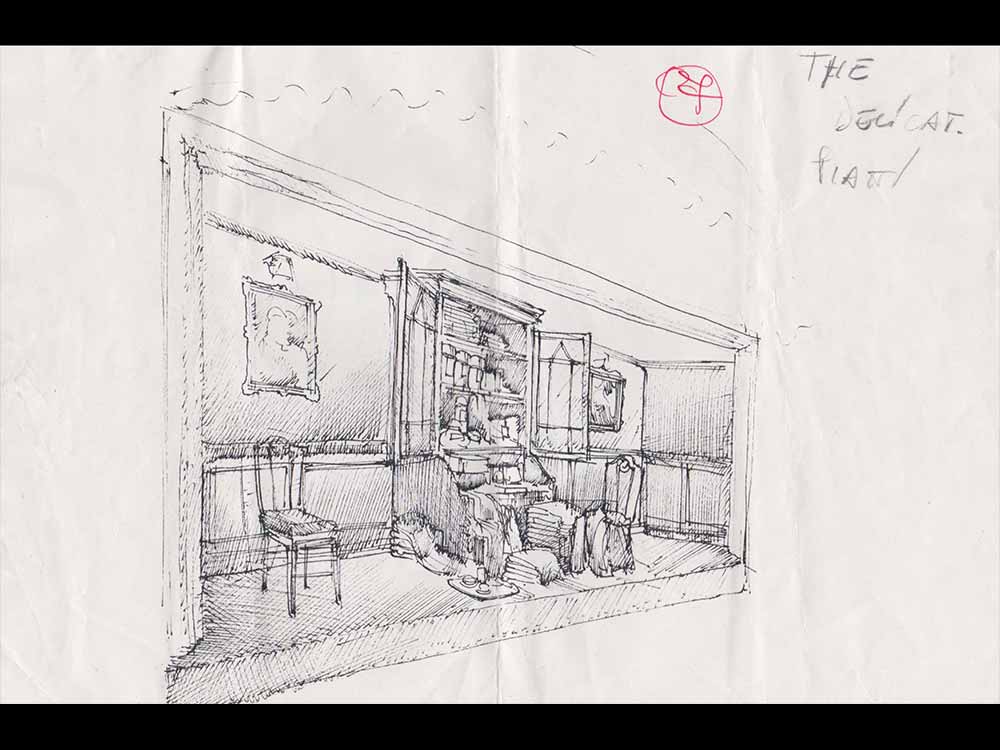
69 / 107 — Shop window, Giorgio Pulici, progetto per allestimento di vetrine LR, 2000
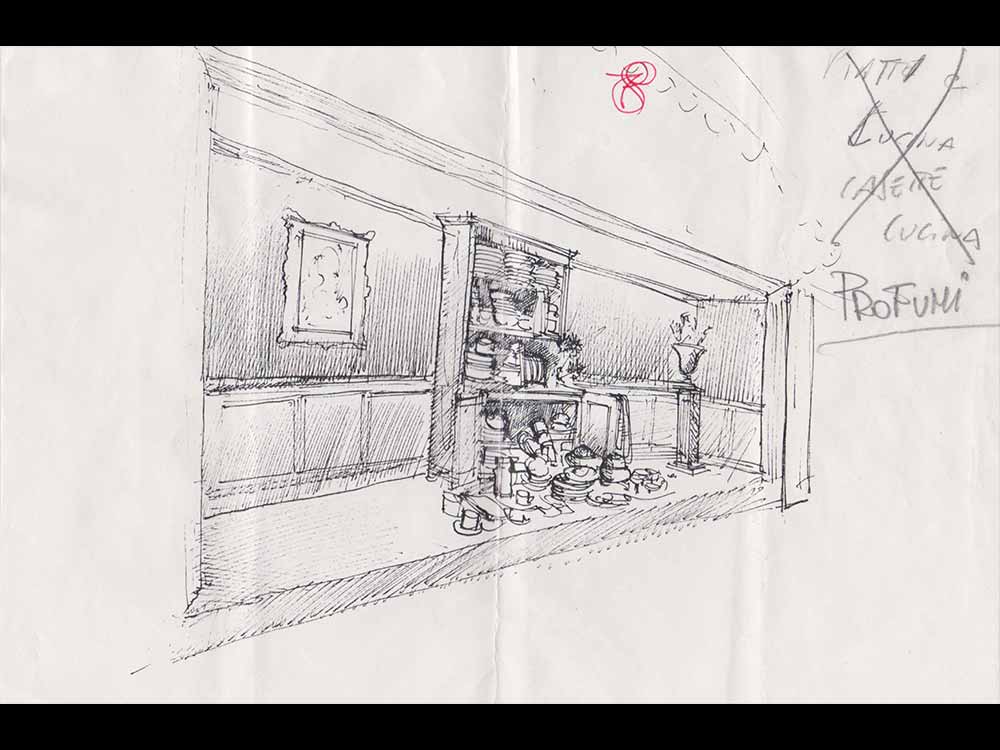
70 / 107 — Shop window, Giorgio Pulici, progetto per allestimento di vetrine LR, 2000
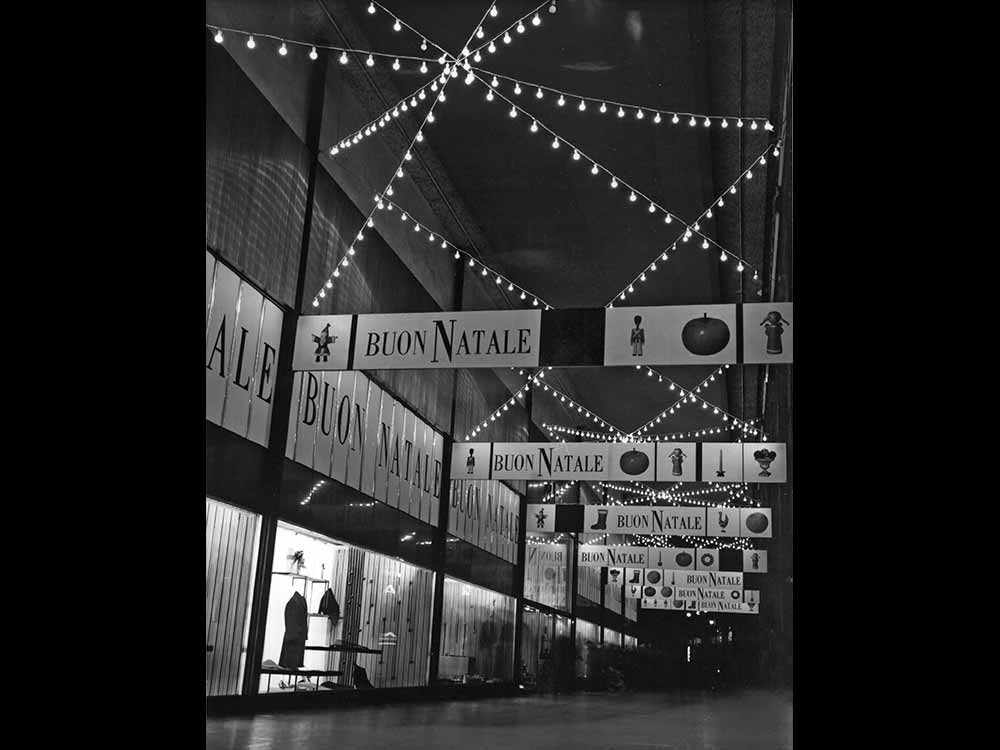
71 / 107 — External installation, Giancarlo Iliprandi, allestimento esterno per "Natale idea", 1956
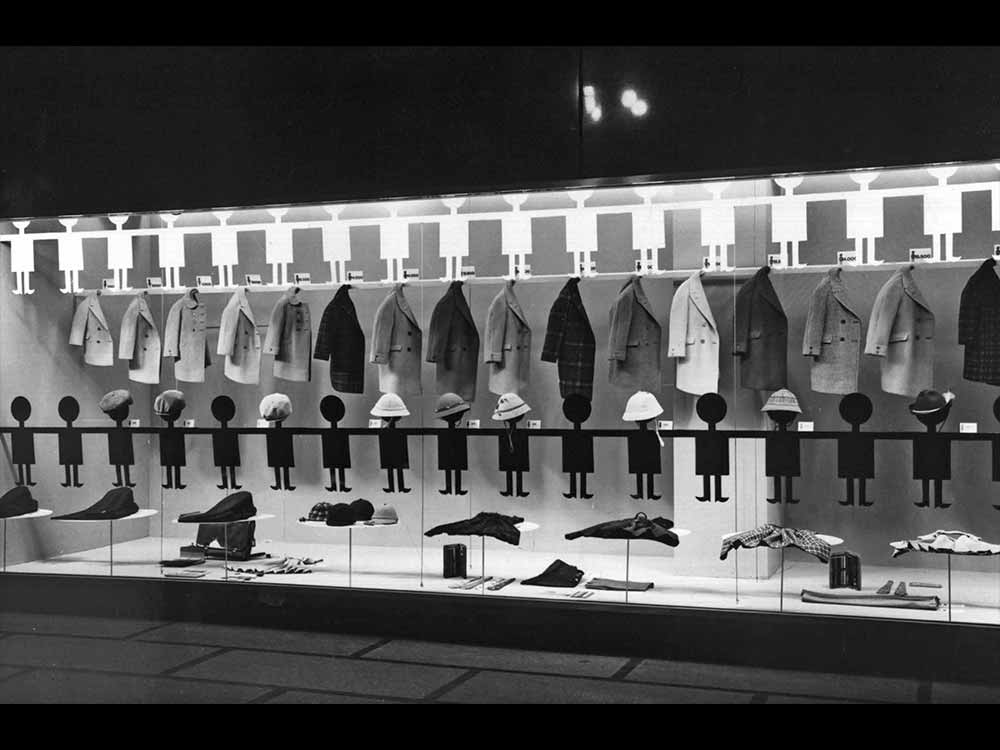
72 / 107 — Shop window, Giancarlo Iliprandi, scuola, 1957

73 / 107 — Shop window, Giancarlo Iliprandi, scuola, 1957

74 / 107 — Shop window, Giancarlo Iliprandi, Fiera del Bianco, 1958
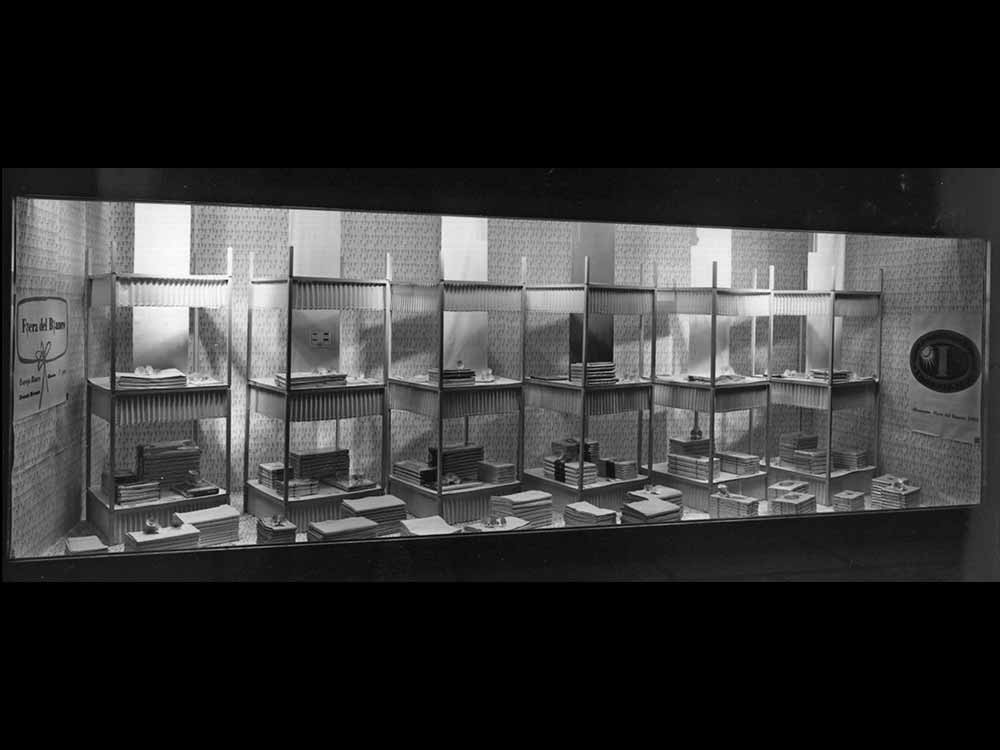
75 / 107 — Shop window, Giancarlo Iliprandi, Fiera del Bianco, 1958
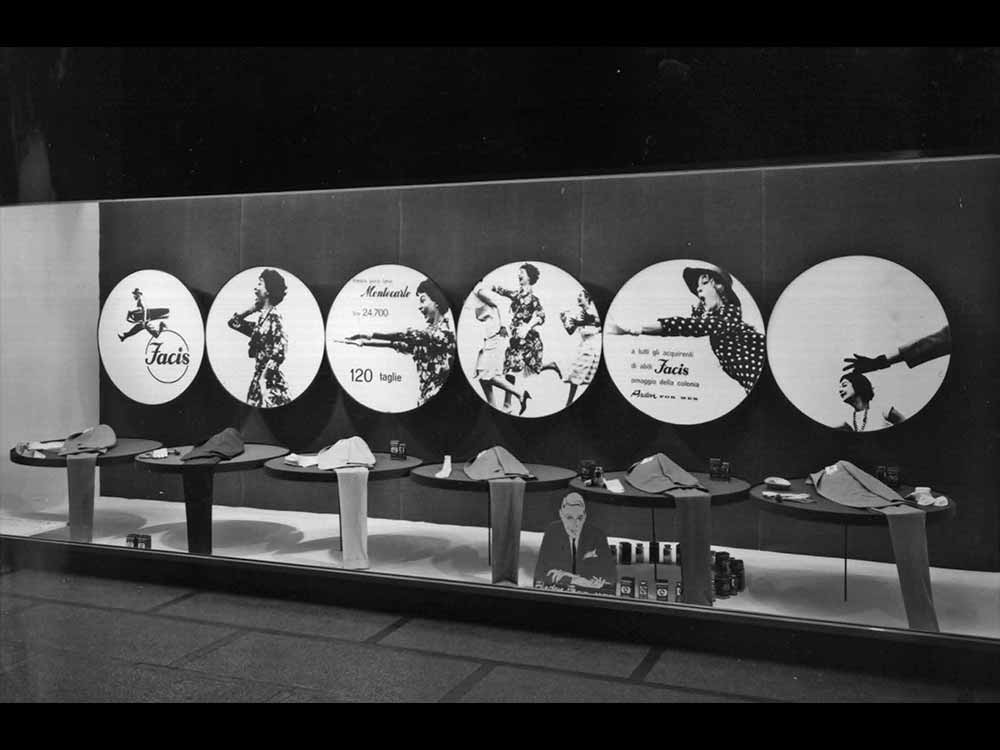
76 / 107 — Shop window, Giancarlo Iliprandi, Facis, 1958
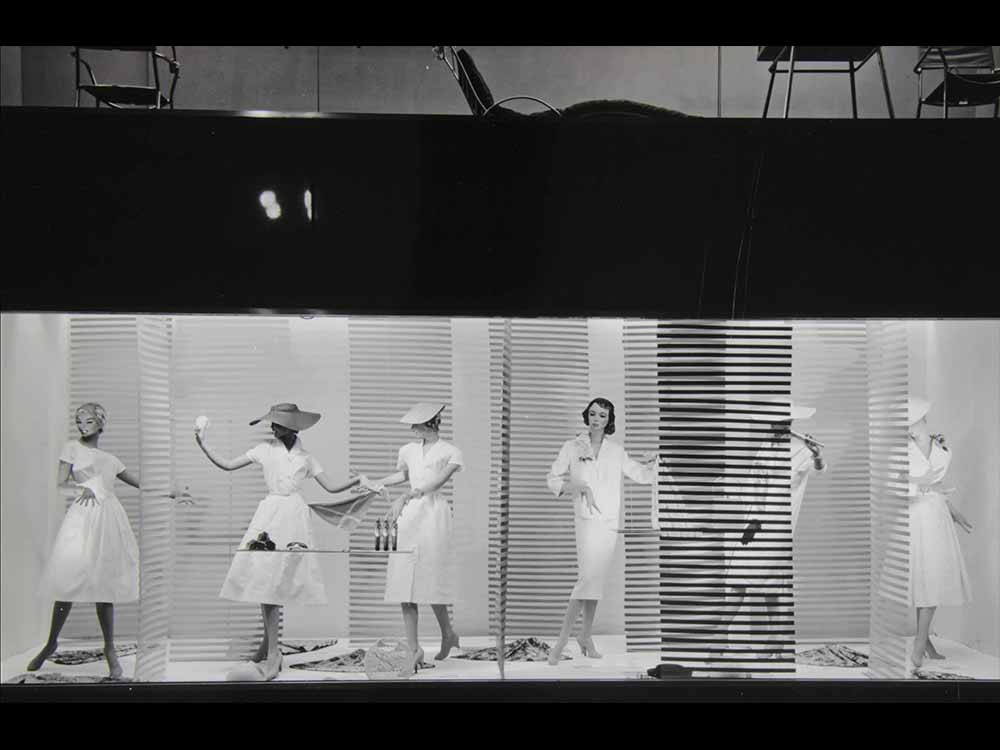
77 / 107 — Shop window, Gian Carlo Ortelli, vetrina moda estate, 1956
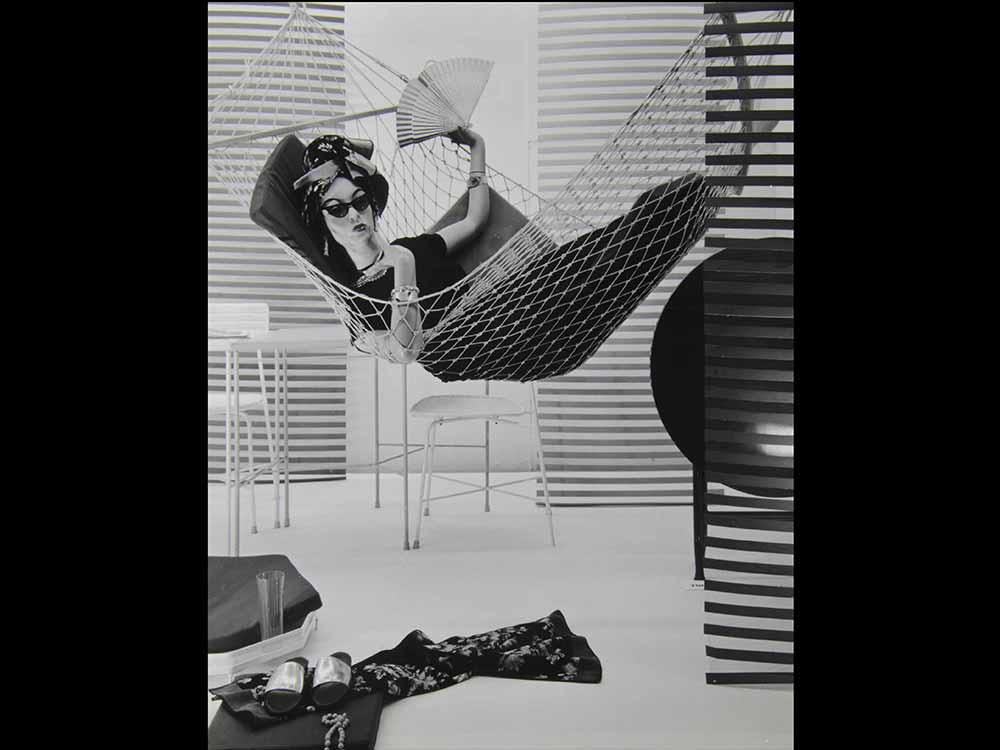
78 / 107 — Shop window, Gian Carlo Ortelli, particolare di vetrina de la Rinascente, 1956
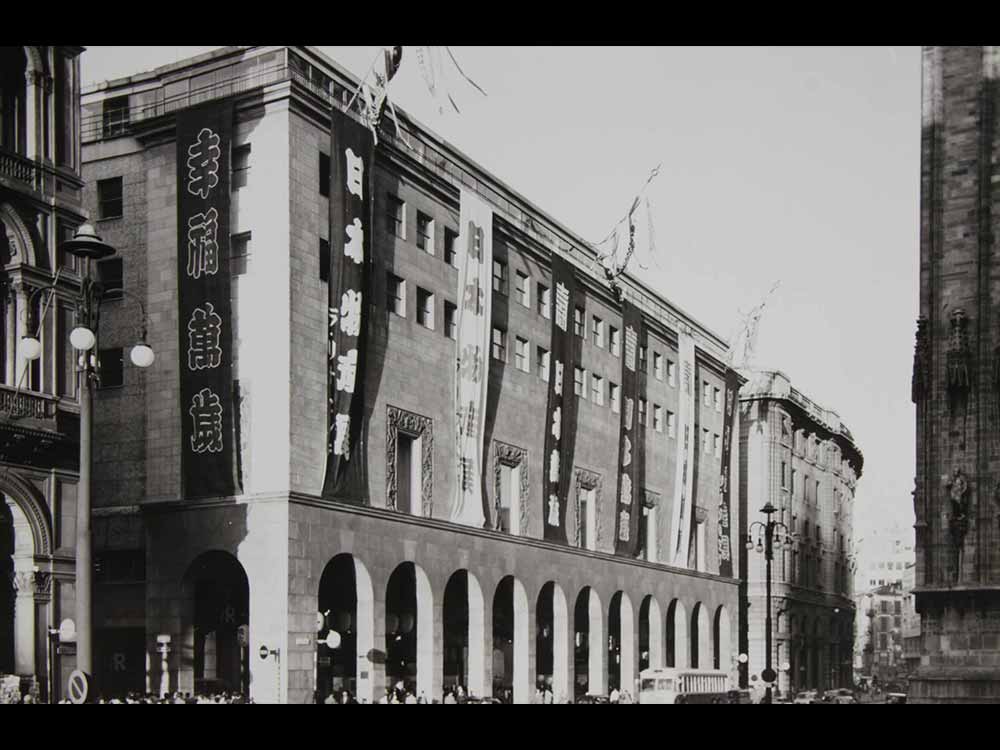
79 / 107 — External installation, Gian Carlo Ortelli, la Rinascente Grandi Manifestazioni. Il Giappone, 1956
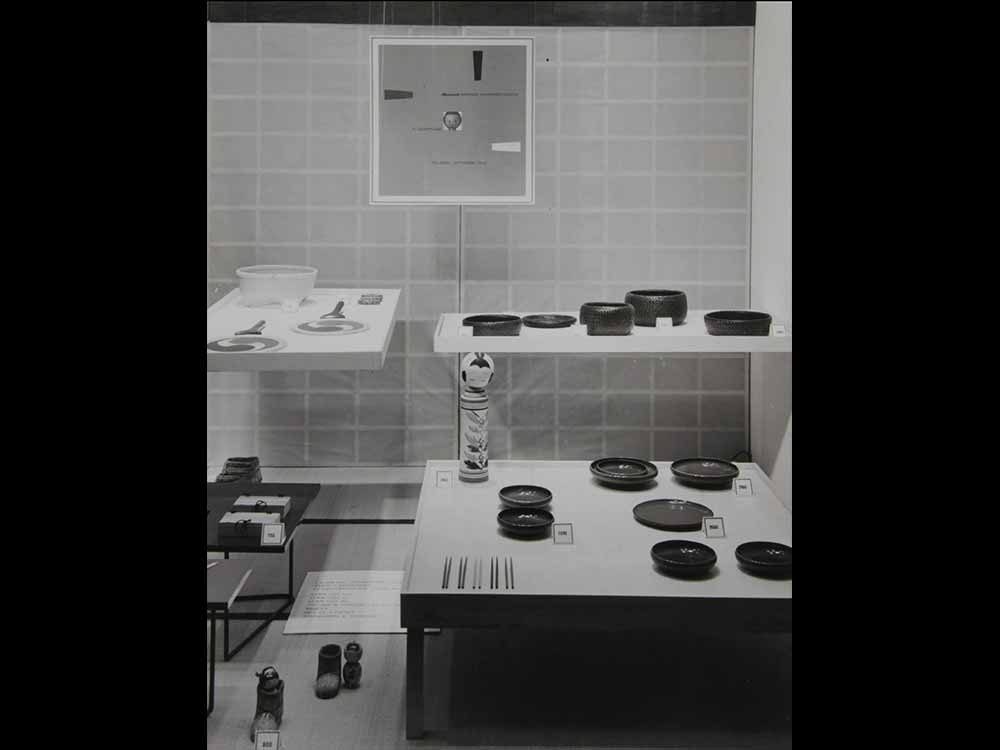
80 / 107 — Shop window, Gian Carlo Ortelli, la Rinascente Grandi Manifestazioni. Il Giappone, 1956
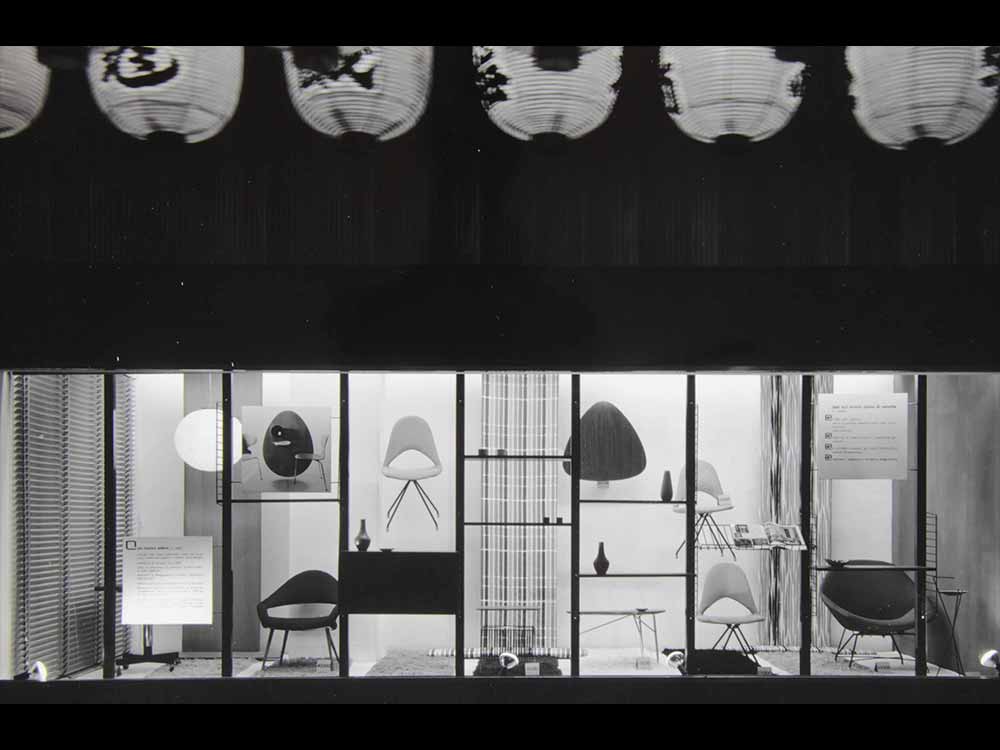
81 / 107 — Shop window, Gian Carlo Ortelli, la Rinascente Grandi Manifestazioni. Il Giappone, 1956

82 / 107 — External installation, Gian Carlo Ortelli, la Rinascente Grandi Manifestazioni. Il Giappone, 1956

83 / 107 — External installation, Gian Carlo Ortelli, la Rinascente Grandi Manifestazioni. Il Giappone, 1956
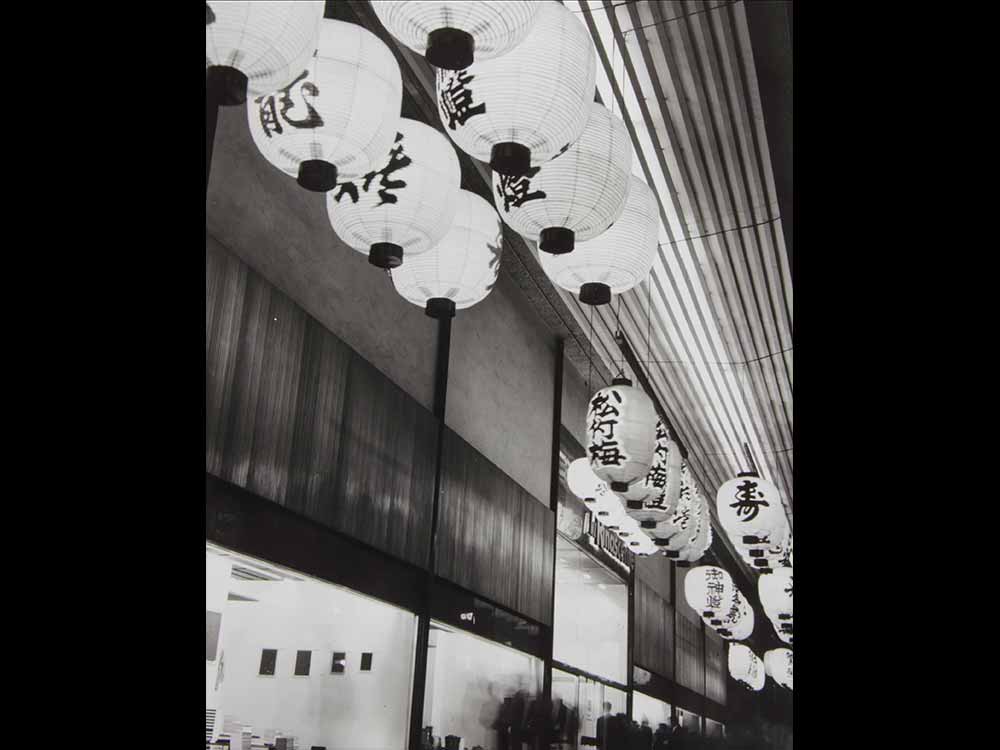
84 / 107 — External installation, Gian Carlo Ortelli, la Rinascente Grandi Manifestazioni. Il Giappone, 1956
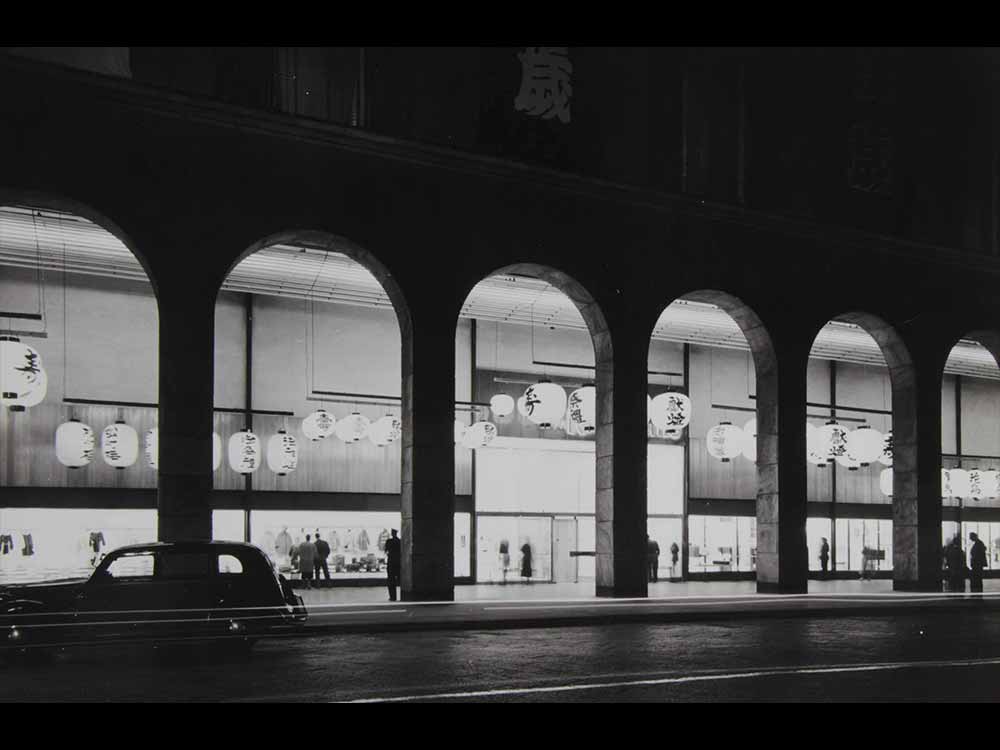
85 / 107 — External installation, Gian Carlo Ortelli, la Rinascente Grandi Manifestazioni. Il Giappone, 1956
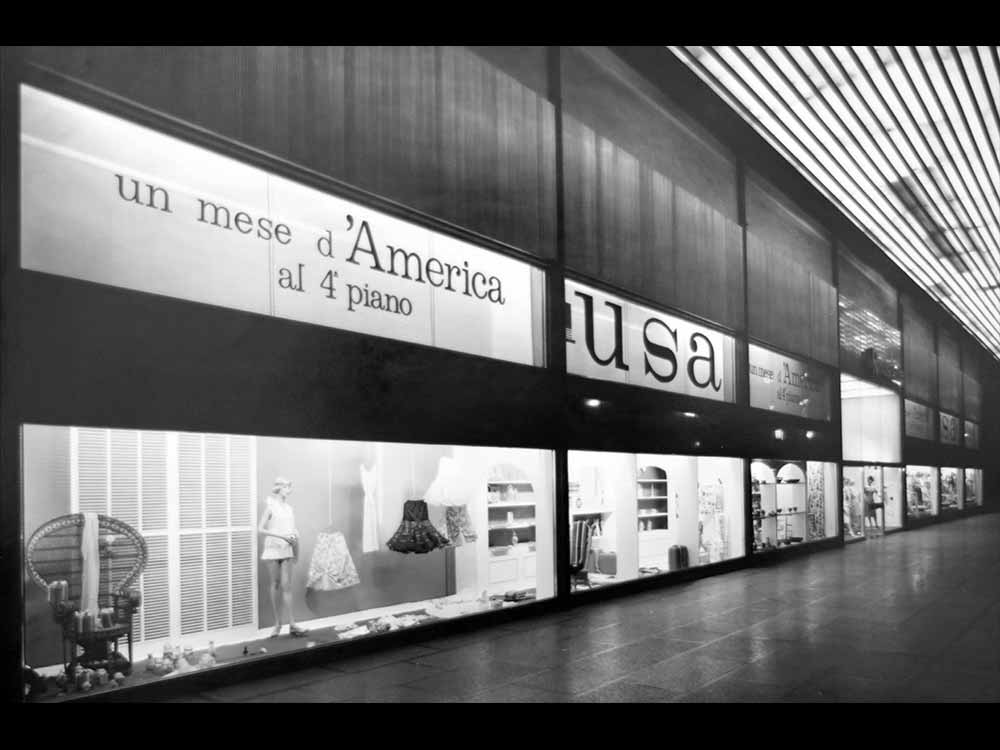
86 / 107 — Shop window, Gian Carlo Ortelli, Un mese d'America a la Rinascente, 1958

87 / 107 — Shop window, Gian Carlo Ortelli, Un mese d'America a la Rinascente, 1958
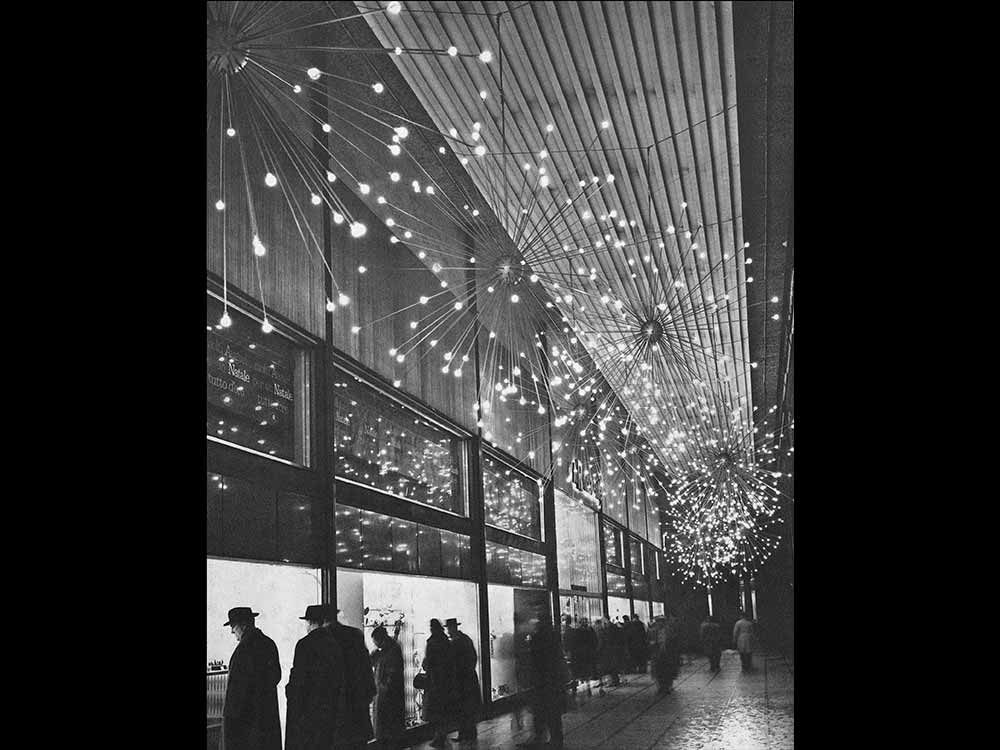
88 / 107 — Shop window, Gian Carlo Ortelli, Natale idea, 1958
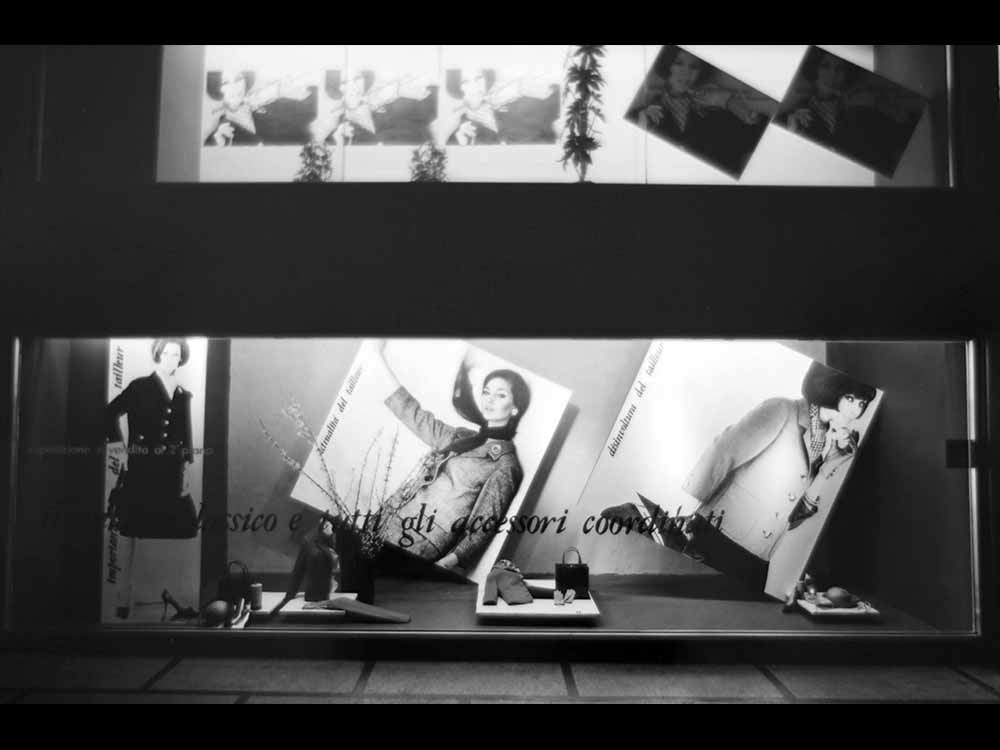
89 / 107 — Shop window, Gian Carlo Ortelli, tailleur, 1962 ca.
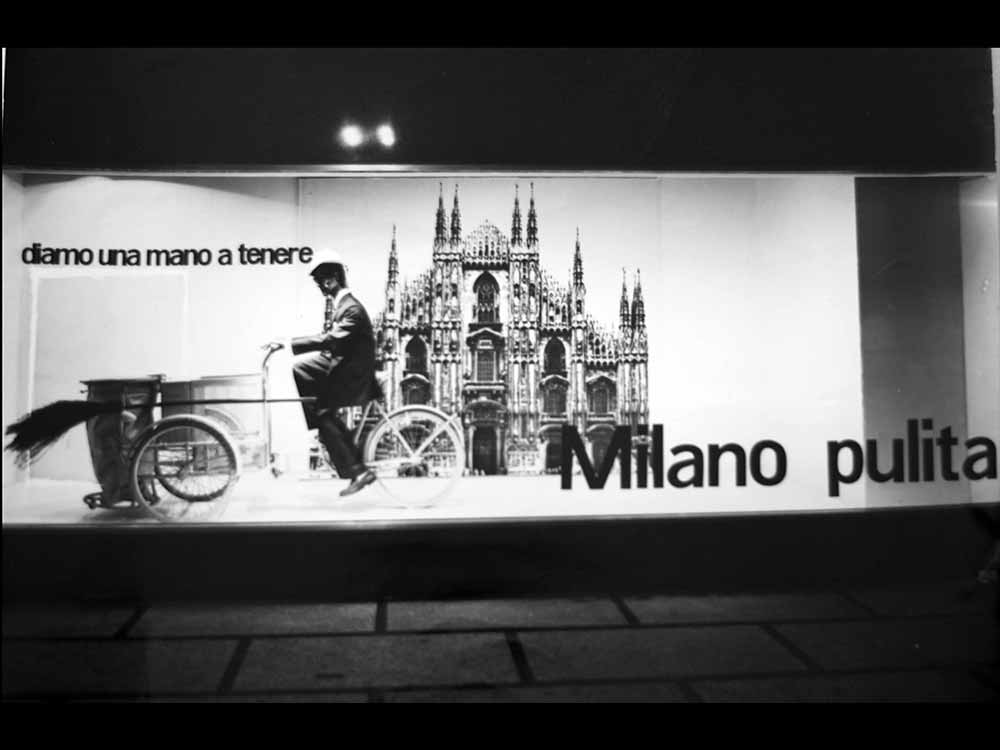
90 / 107 — Shop window, Gian Carlo Ortelli, Milano pulita, s.d.
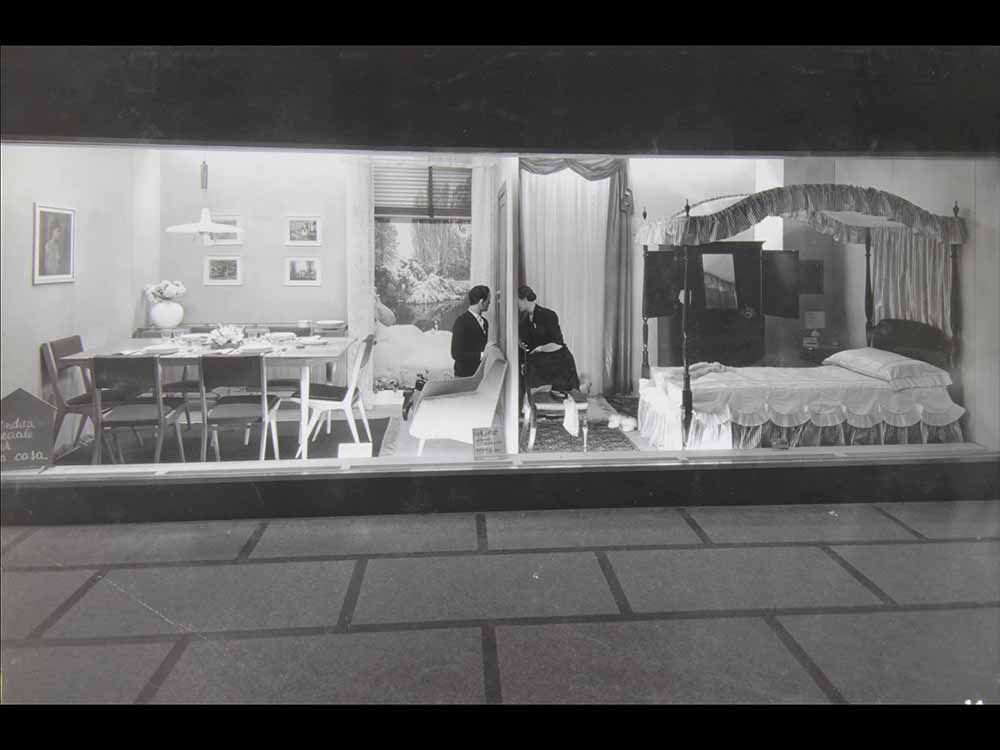
91 / 107 — Shop window, vendita speciale per la casa, 1950
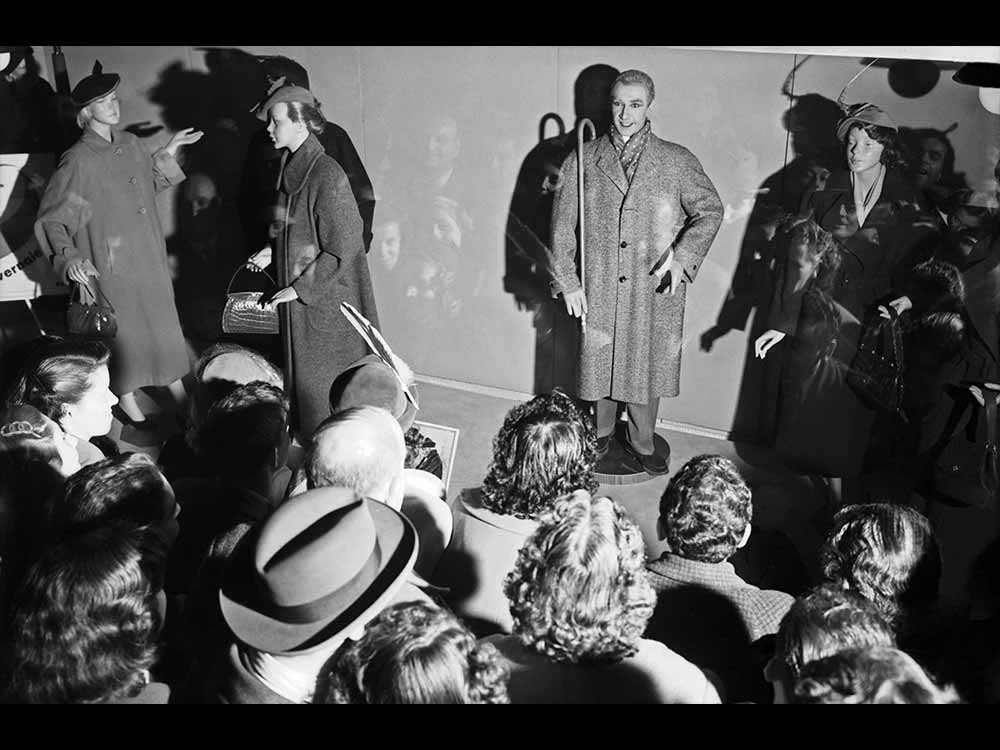
92 / 107 — Shop window, manichino maschile "vivente" in una vetrina de la Rinascente, 1951

93 / 107 — Shop window, manichino maschile "vivente" in una vetrina de la Rinascente, 1951
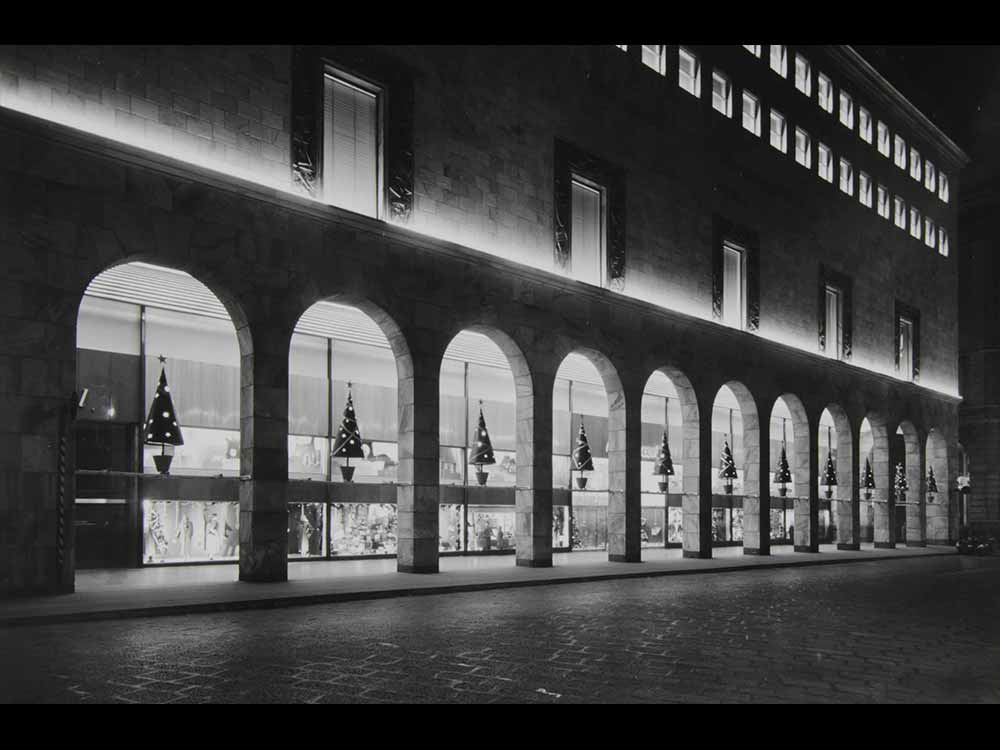
94 / 107 — External installation, Natale, 1951
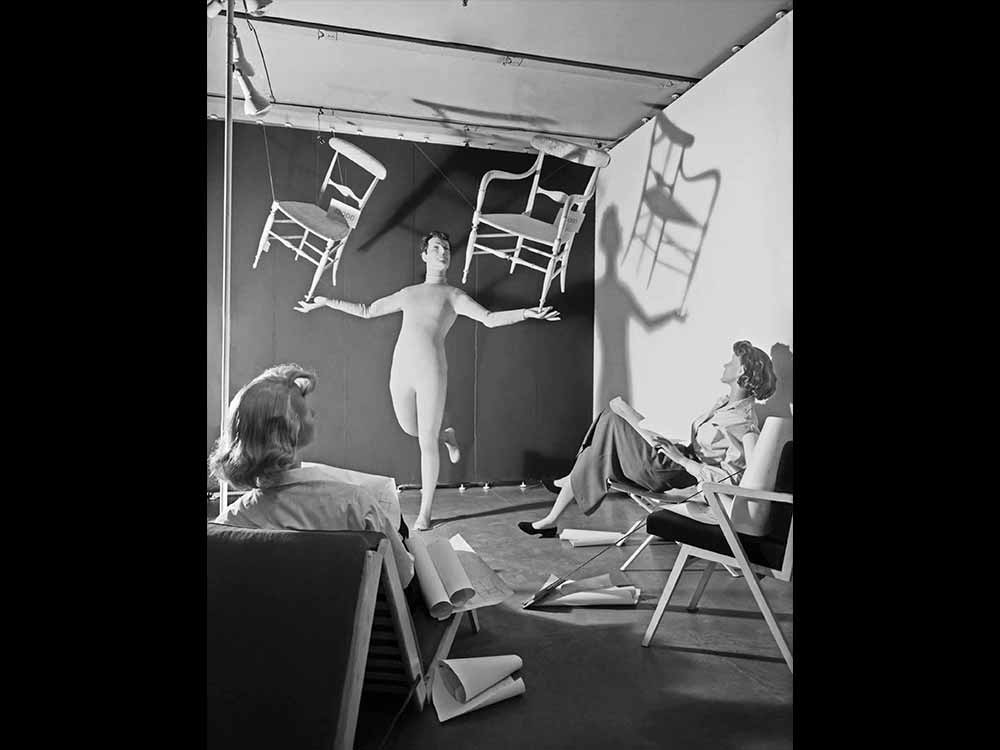
95 / 107 — Shop window, particolare di una vetrina de la Rinascente, 1951
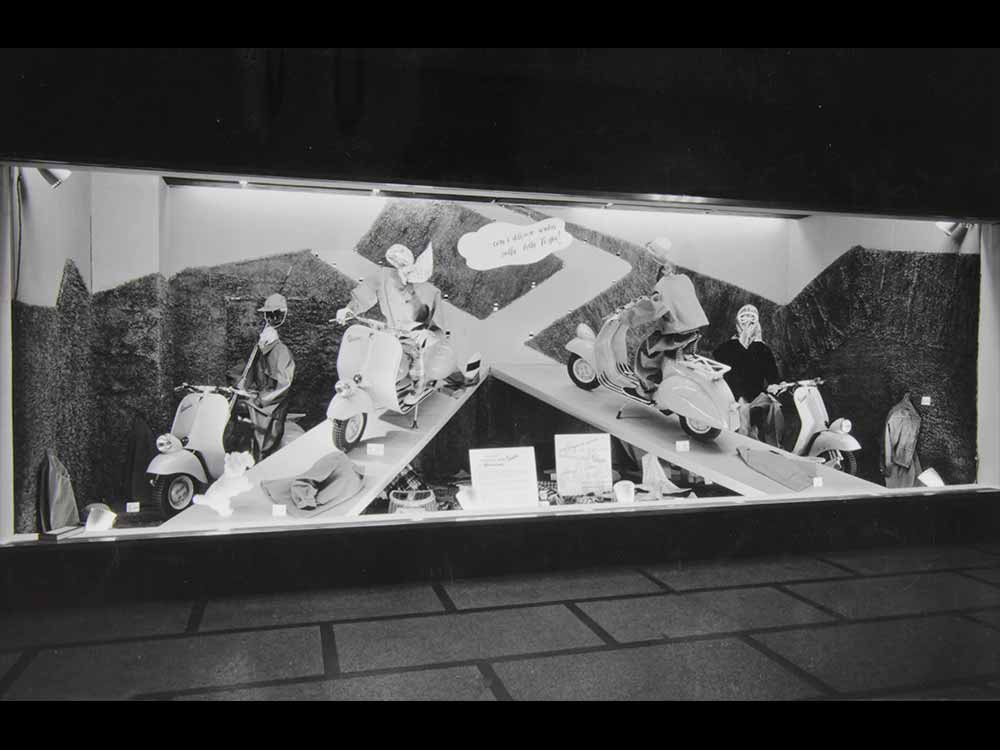
96 / 107 — Shop window, vetrina dedicata alla settimana della Vespa a la Rinascente, 1953

97 / 107 — Shop window, vendita speciale per la casa, 1954 ca.
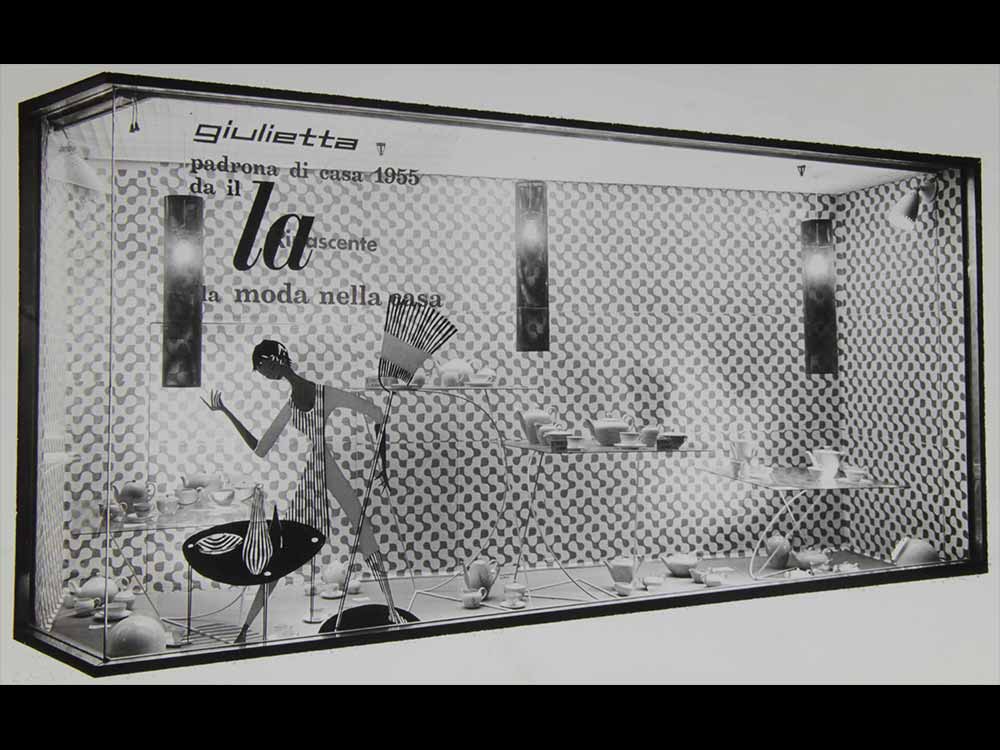
98 / 107 — Shop window, Giulietta, padrona di casa 1955, 1955
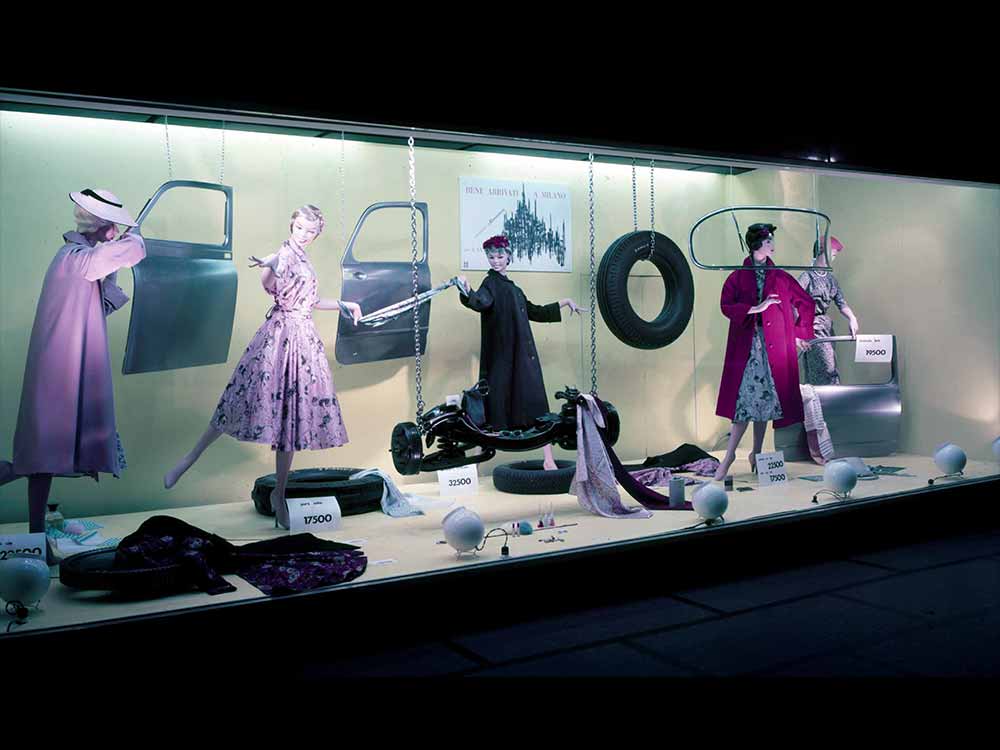
99 / 107 — Shop window, vetrina de la Rinascente con pneumatici Pirelli , 1956

100 / 107 — Shop window, vetrina celebrativa dedicata al Mercato Comune europeo, 1957

101 / 107 — Shop window, particolare della vetrina celebrativa dedicata al Mercato Comune europeo, 1957

102 / 107 — Shop window, vetrina de la Rinascente, 1966
Photo Paolo Monti
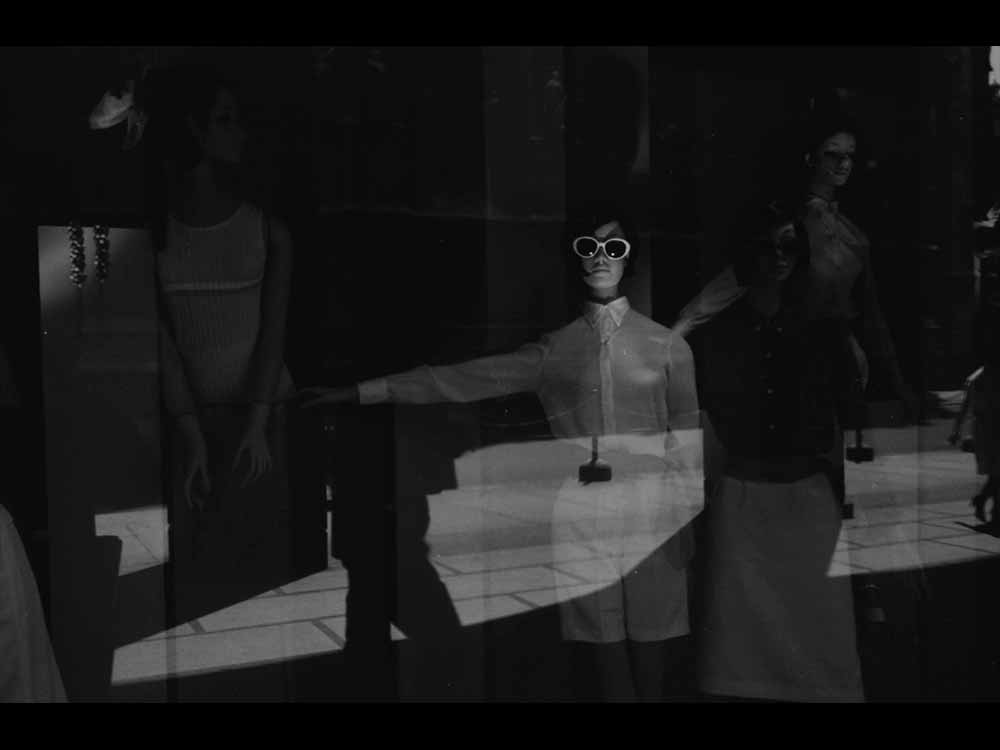
103 / 107 — Shop window, vetrina de la Rinascente, 1966
Photo Paolo Monti

104 / 107 — Shop window, vetrina dedicata ai cappelli, s.d.

105 / 107 — Shop window, novità primavera, s.d.
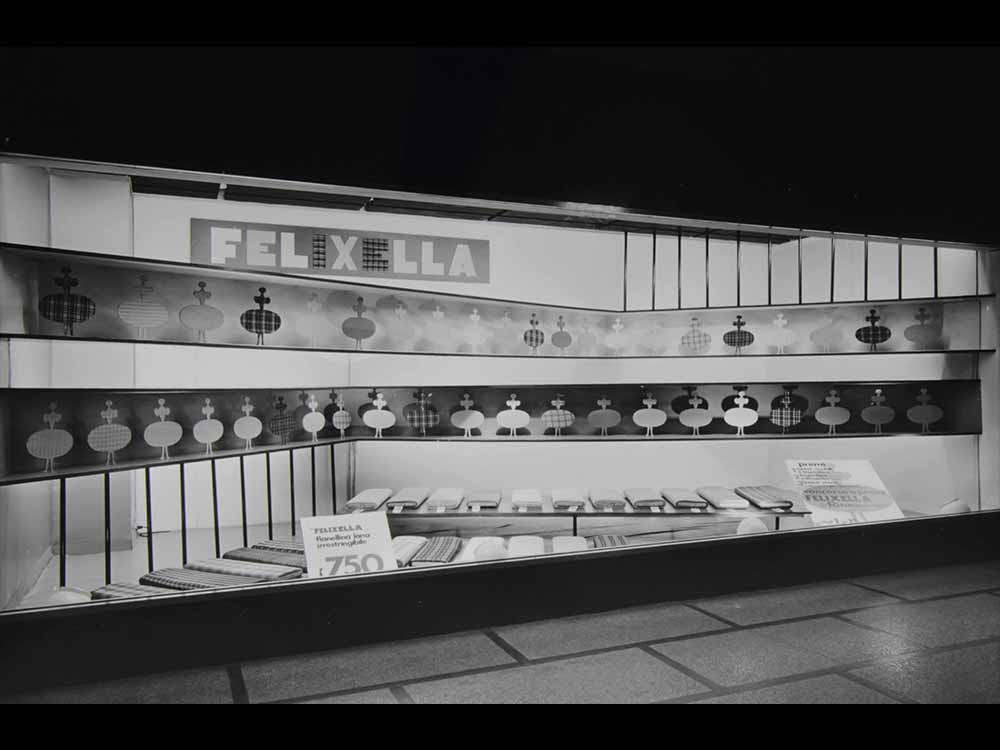
106 / 107 — Shop window, Felixella, s.d.

107 / 107 — Shop window, vetrina dedicata alla settimana della Vespa a la Rinascente, s.d.